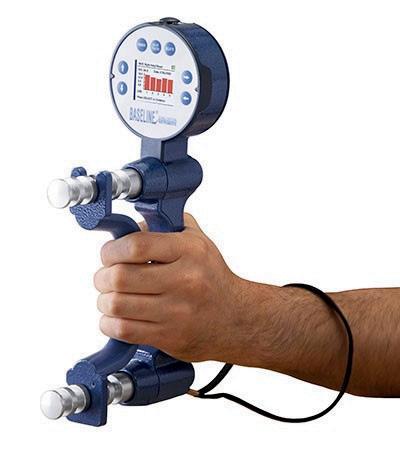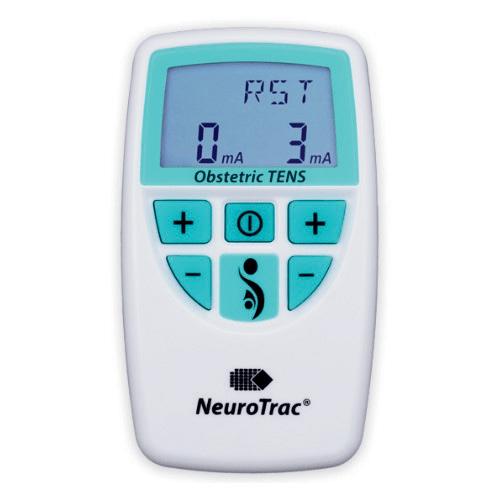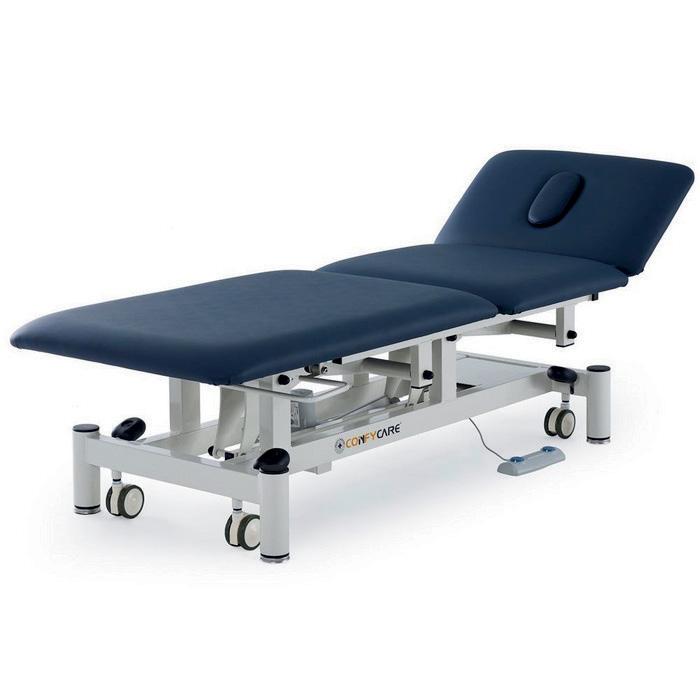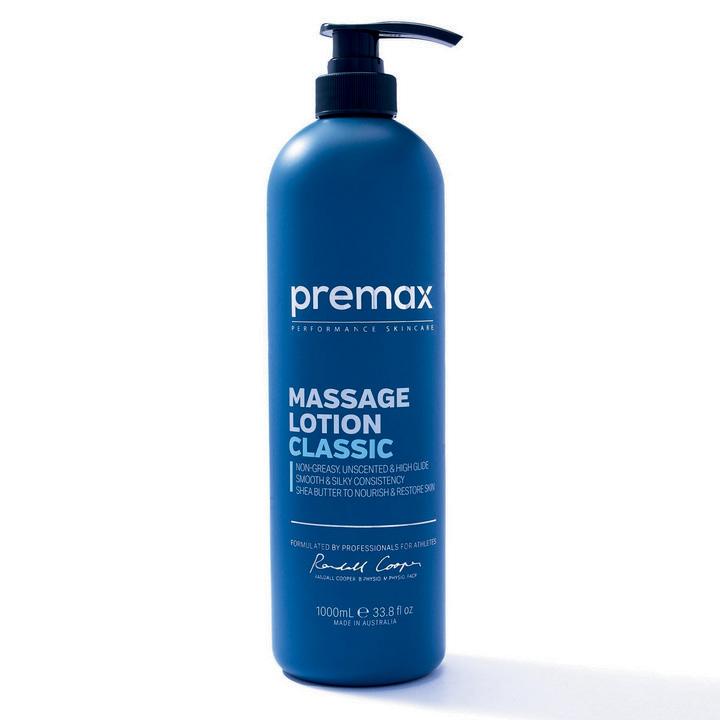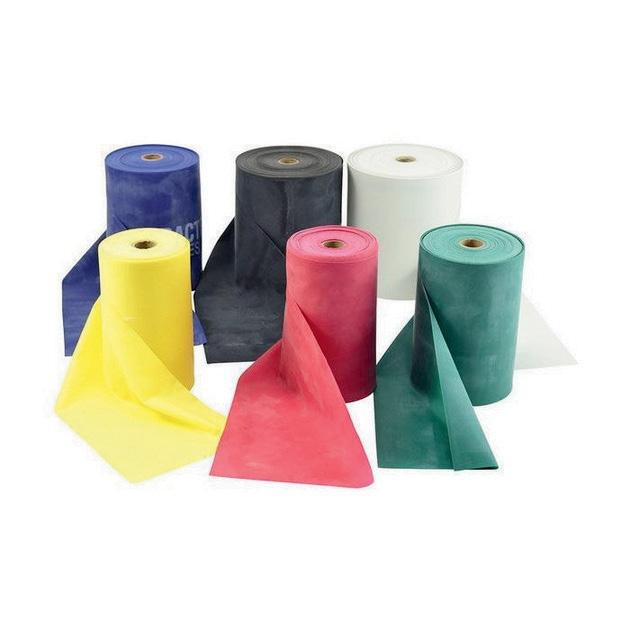

THORACIC MANUAL THERAPY
SHOULDER IMPINGEMENT
SYNDROME MANAGEMENT
Leave the busy work to us
Practice management software that helps you make the most out of your day.
Plans start at $14.50/per month
In-platform insurance integration
Scheduling & client waitlist
Online forms & bookings
Appointment reminders
Progress notes
Zoom® Telehealth
Reports & analytics
Plus so much more
Start a Free Trial

PRESIDENT’S MESSAGE
SETTING THE STAGE FOR SUCCESS IN 2025
Welcome to this edition of Osteo Life. Even though it’s now May, I wanted to extend my warmest wishes to all our members for a successful and fulfilling 2025. This is shaping up to be an exciting year for Osteopathy Australia, and I’m thrilled to share some of the initiatives and priorities your Board has been working on to further strengthen our profession.
Following the outcomes of the Special General Meeting (SGM) held in December 2024, we are actively working on updating our membership options to better reflect the needs and diversity of our community. These updates aim to provide more tailored benefits and support, ensuring that every member feels valued and empowered in their professional journey. Further details will be shared in the coming months as we implement these changes.
Another significant project underway is the renewal of our website and database. This upgrade is designed to create a more osteopathy-specific platform that
from our members across the country. Your voice is essential in shaping the future of osteopathy, so I’d encourage all who are able to attend to please make the effort to come along. They are wonderful nights and this year will be no different.
On a broader scale, the federal election took place on 3 May, presenting opportunities and challenges for our profession. As an organisation, we remain committed to being open, proactive, and ready to engage with stakeholders to advocate for policies that support osteopathy and its role in Australia’s healthcare system. We encourage all our members to stay informed and involved as we navigate this important period. You can do this by reaching out to your local members of parliament and educating them about the fantastic work osteopaths do for their patients within the electorate. Not to mention the businesses you run, the people you hire and the captive audiences you have in your treatment room – all are valuable points to bring up in these conversations.
We also look forward

directly during our member townhalls scheduled for the middle of the year. These townhalls will provide a valuable opportunity to discuss key issues, share insights and gather feedback
We have held the first of two Board elections for 2025. Thank you to all the outstanding candidates, Tom Barry, Tayla Lane, Alana Lloyd, Mollie McCarthy and Heath Williams, who put their hands up to serve the profession. I congratulate Heath Williams on being elected as Director-Elect. We look forward to working alongside him as we continue to advocate for the future of osteopathy in Australia.
Thank you for your continued dedication and contributions to the osteopathic profession. The Board and I are excited about the year ahead and remain steadfast in our commitment to serving you and advancing osteopathy in Australia. Here’s to a productive and exciting 2025!
Yours in health, MATT COOPER
President, Osteopathy Australia mcooper.director@osteopathy.org.au
Osteopathy Australia acknowledges the Traditional Custodians and Elders of Country throughout Australia, and their connection to land, sea and community. We pay our respects to Aboriginal and Torres Strait Islander Elders, past, present and emerging.
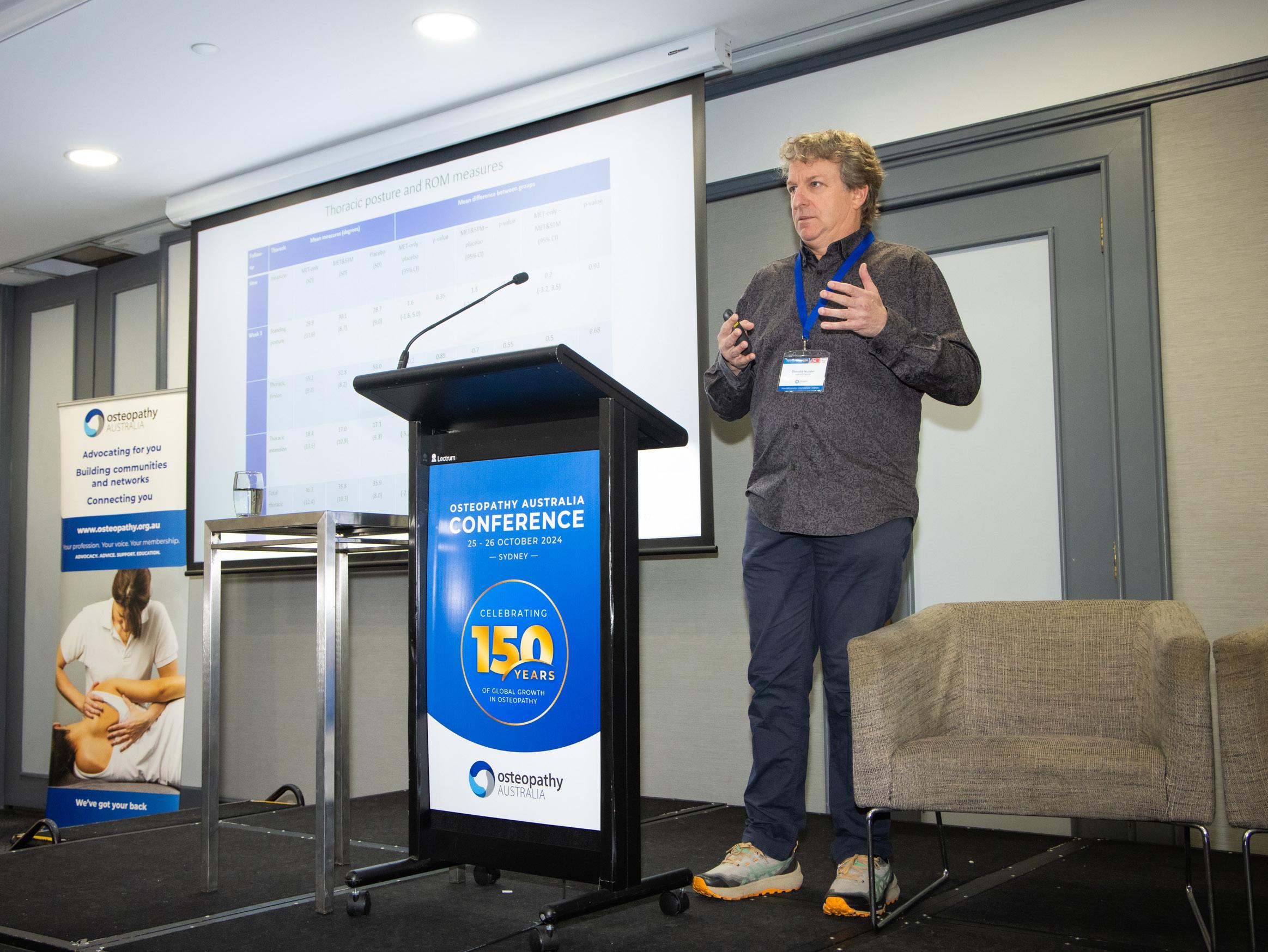
Osteopathy Australia
T (02) 9410 0099
E info@osteopathy.org.au
W www.osteopathy.org.au osteopathyaustralia osteopathyau osteopathyaustralia
OSTEO LIFE is a magazine for Osteopathy Australia members.
For enquiries, feedback, or to contribute, contact Communications on 02 9410 0099 or comms@osteopathy.org.au
For advertising enquires, email info@osteopathy.org.au.
Communications and Marketing Working Group Tara Bain, Toby Barker, Adam Nicholson, Rebekka Thompson-Jones
Chief Executive Antony Nicholas
Editor Rebekka Thompson-Jones
Designer Stephanie Goh
Advertising info@osteopathy.org.au
Printed by Megacolour Printed on 100% recycled paper: one of our commitments

Individually, we can achieve great things. But when you belong to a community swarming towards a common goal, that’s when we form our strongest line of defence, and the sky’s the limit.
Guild Insurance and Osteopathy Australia have partnered for over 20 years now
to protect the future of your profession. With us, you’ll be shielded by a policy created from unmatched insight into your profession, access to risk management materials to help you reduce the risk of a claim, backing from the industry body that stands up for Australian osteopaths, and so much more.
Together, we form the network that ensures Australian osteopaths don’t have to fly solo. Get the full picture of how you can be part of something bigger by visiting guildinsurance.com.au/osteopaths or calling 1800 810 213 today.
Don’t go it alone
The sleep system Osteopaths recommend
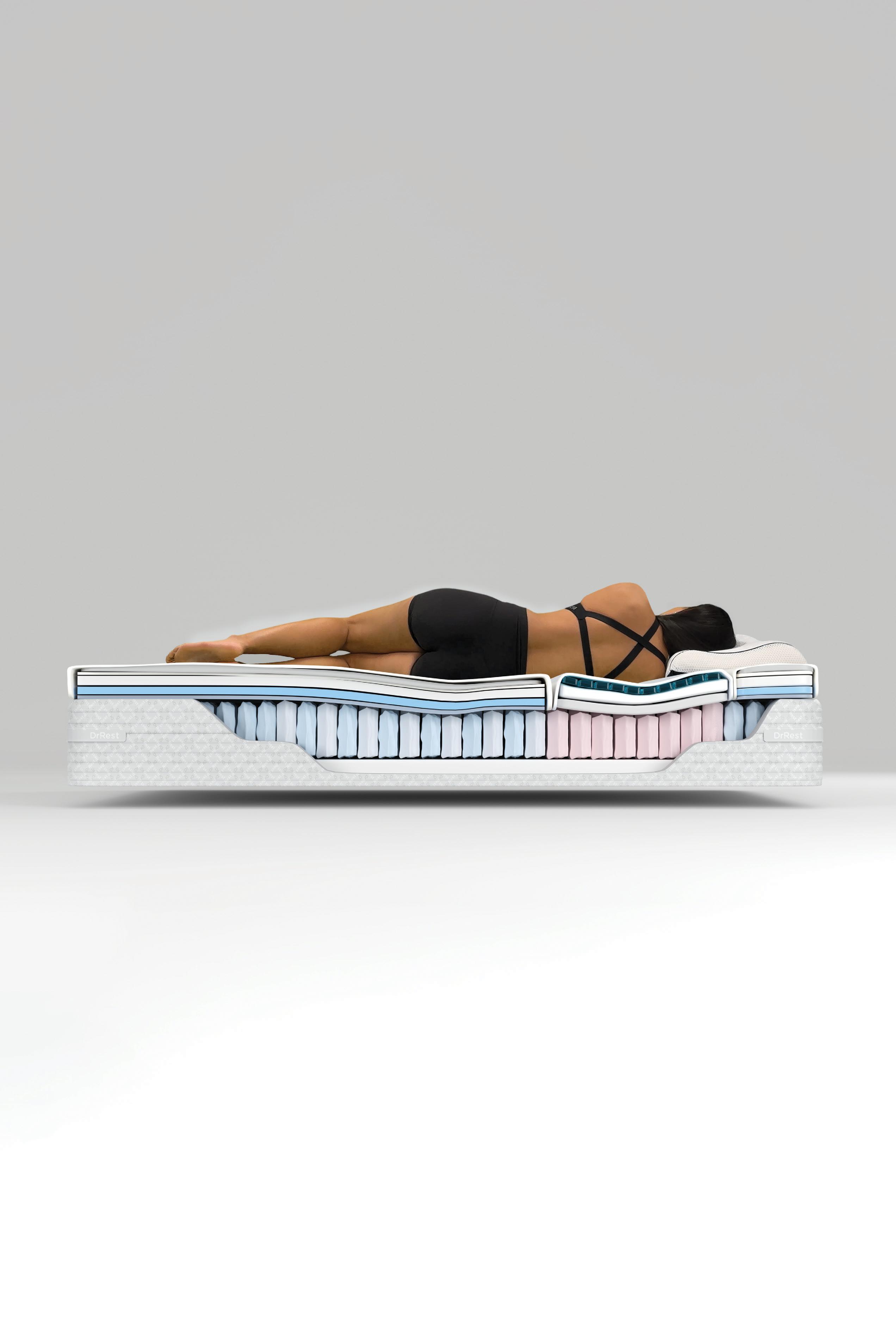
Following five years of research and development and a further two years of real-time trials in an osteopathic clinical setting, the DrRest experts have created a mattress that health professionals can confidently recommend to patients. A sleep system that complements and supports the care that osteopathic practitioners provide for spinal alignment and quality rest and recovery.
Learn more about becoming a DrRest referrer or partner at drrest.com.au/join
LOWER BODY ZONE
Comfort constructionquilted bottom zones.
SHOULDER ZONE HEAD ZONE
The DrRest shoulder zone has been expertly designed with Technogel©, the world’s only three dimensional biocompatible comfort layer.
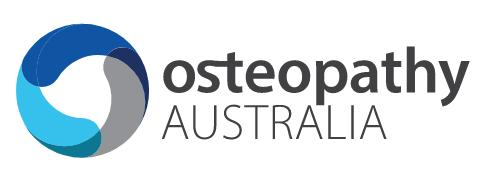
Comfort constructionquilted top.
Patented design, Australian owned and made.
OSTEOPATHY AUSTRALIA NEWS
Osteopathy Australia aims to support, enhance and promote the profession. Here’s a quick recap of everything osteo from the past few months.
NOTES FROM THE ASSOCIATION
We’re into the second quarter of the year, and the gains made in 2024 are ensuring that this is going to be a big year for osteopathy.
The proposed new osteopathy course at Edith Cowan University marks a major step forward – one that reflects years of steady advocacy and collaboration. We’re continuing to work with other universities to create even more entry points into the profession.
Our career hub and mentoring programs have expanded, offering tailored support for members at all stages of their career – from early practice to diversification and leadership. This is all part of our commitment to back you with the tools, connections and opportunities that matter most.
We wrapped up 2024 with strong advocacy results: 38 submissions, 31 formal consultations, and hundreds of stakeholder meetings. Two early 2025 advocacy wins now see osteopathy is now formally recognised under allied health services in the new Aged Care Act under residential care, and osteopaths won’t require separate registration under the aged care framework – a welcome cut to red tape.

And yes, the federal election has just taken place. While the dust is still settling, our work continues –engaging with new and returning MPs to ensure osteopathy stays on the policy agenda.
On the CPD front, we are building on the successes of 2024, where we delivered a packed program: 24 webinars, two national workshops/seminars, five new eLearning courses, and a stellar return to national conference post-COVID. Osteo Talk also returned, bringing fresh insight direct to your ears.
“We wrapped up 2024 with strong advocacy results: 38 submissions, 31 formal consultations, and hundreds of stakeholder meetings.”
Behind the scenes, we responded to more than 104,800 emails and over 2,100 calls – with 80 per cent needing detailed follow-up. That’s the kind of day-to-day support that defines us.
COMING UP SOON: MEMBERSHIP RENEWAL
We know cost-of-living pressures are biting – and we’re stepping in to ease the load. The Board has frozen membership fees for 2025-26. No CPI increase. No added pressure. Just continued support, access, and advocacy. Keep an eye on your inbox. Renewal details are on the way. As always, we’re here to support you and enhance and promote the profession.
ANTONY NICHOLAS Chief Executive, Osteopathy Australia ceo@osteopathy.org.au

OPENING DOORS TO RESEARCH: MENTORSHIP PROGRAM BUILDS STRONGER FUTURE FOR OSTEOPATHY
BY REBECCA SEBASTIAN
Not every osteopath dreams of becoming a researcher – but many are curious about how research could deepen their understanding of clinical practice, contribute to the profession, or open new career possibilities.
For those unsure where to begin, Osteopathy Australia’s Research Pathways Mentorship Program offers a welcome entry point.
Now in its third year, the 12-month mentorship program is designed for mentees and mentors, but this year we are hoping to recruit more mentees – students, earlycareer osteopaths, or clinicians exploring research for the first time.
It’s a supportive, structured way to explore research in a way that’s relevant, achievable and, importantly, human.
The program matches each mentee with a mentor – an experienced osteopathic researcher based on shared interests.
From June 2025 to June 2026, pairs meet four times across the year to workshop research ideas, talk through methods, discuss academic reading and writing, and navigate the ins and outs of life as a clinician-researcher.
It’s a safe space to ask questions – especially the ones that feel too basic to ask anywhere else.
“This program was exactly what I needed,” said one 2023 mentee.
“I had research questions floating around in my head for years, but didn’t know how to turn them into something practical.
“My mentor helped me figure out what was possible, what was worth pursuing, and how to get started.”
Crucially, the program is designed with flexibility in mind. Mentees and mentors set their own schedule –monthly check-ins are encouraged, but there’s no onesize-fits-all formula.
The emphasis is on building confidence and connection, not completing a research project from start to finish.
That said, many mentees do begin early work on research ideas that may grow into formal projects, further study, or collaborations.
Others use the program to test the waters –to see whether research is a path they’d like to take more seriously. Either way, the experience is often transformative.
“I’d always thought research was too academic for me – like it was a world for someone else,” shared another participant.
“But through this program, I realised research can be practical, collaborative and directly connected to patient care.
“It’s changed how I practise.”
The program is also building something bigger: a national community of osteopaths who are thinking critically, asking better questions, and linking research to practice.
Mentees not only gain new knowledge and skills, but they also find a sense of belonging in a space where curiosity is encouraged, not dismissed.
Applications are now open for the 2025–2026 intake. If you’re curious about research but don’t know where to begin – or you’ve got a burning question and want support to explore it – this program could be your starting point.
Find out more or express your interest at osteopathy. org.au/research/research-mentorship-program
Because the future of osteopathy isn’t just in hands-on care; it’s also in the questions we ask, and the evidence we help build.
WELCOMING OUR NEWEST TEAM MEMBERS: SIMONA RYBAR AND REBECCA SEBASTIAN
At Osteopathy Australia, we’re always evolving, and a strong team is at the heart of our mission to support osteopaths and promote the benefits of osteopathy. We’re thrilled to introduce two new team members who bring a wealth of experience, energy and expertise to the organisation.
SIMONA RYBAR – SOCIAL MEDIA COORDINATOR
With over 15 years of experience in the fitness industry, Simona Rybar has built an impressive career rooted in health and wellness. Her journey has taken her from the gym to the real estate world, where she became a licensed agent and discovered a passion for marketing and social media. Holding a Bachelor’s Degree in Commerce, Simona thrives on learning and development, always looking for new ways to grow her skill set.
Despite her shift into marketing, Simona remains deeply connected to the fitness community, continuing to teach fitness classes. Now, as our Social Media Coordinator, she brings her enthusiasm for health and wellness to the osteopathy profession. She’s dedicated to engaging with our members, promoting osteopathy and educating the public about its benefits through dynamic and insightful social media content. With her background in fitness and business, she’s well-equipped to help us strengthen our digital presence and enhance member engagement.
REBECCA SEBASTIAN –EDUCATION AND RESEARCH OFFICER
Rebecca joins us as the Education and Research Officer, bringing extensive experience
in healthcare research and a passion for advancing evidence-based practice. In this role, she will work closely with the policy and advocacy team to support and drive key initiatives in the university, education and research sectors.
Her responsibilities include managing Osteopathy Australia’s research grants, coordinating research committee activities, and fostering collaborations with university stakeholders and researchers. Rebecca will also conduct literature reviews and synthesise research on clinical conditions and interventions, ensuring osteopaths have access to the latest evidence to inform their practice. Additionally, she will assist with developing educational resources and supporting projects that bridge research and practice in osteopathy.
With her strong analytical skills and commitment to improving health outcomes, Rebecca is a valuable addition to our team, and we look forward to the contributions she will make in shaping osteopathy’s future.

LOOKING AHEAD
Simona and Rebecca’s diverse backgrounds add new dimensions to our team. Their skills and dedication will play an important role in strengthening our organisation’s impact, from boosting our digital engagement to contributing to key healthcare initiatives. Please join us in welcoming Simona and Rebecca to Osteopathy Australia –we’re excited to have them on board!
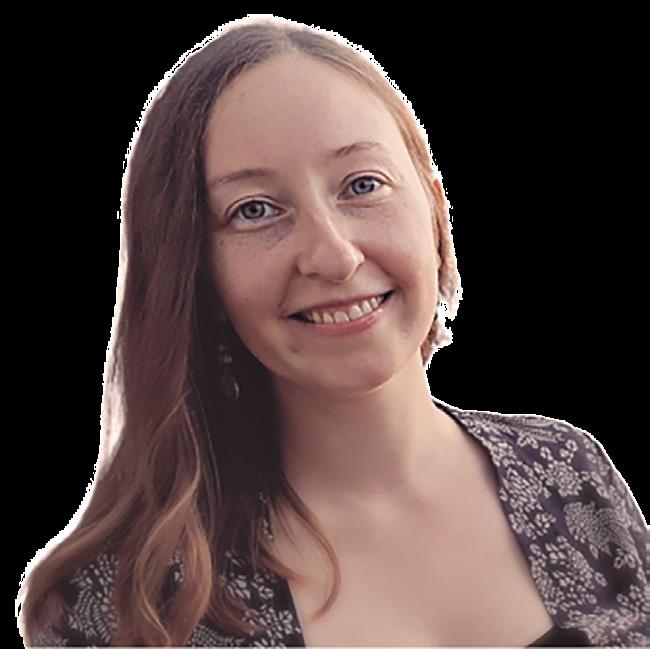
CAMPAIGNS WRAP: AWARENESS AND ADVOCACY IN ACTION
April marked a busy campaigns month for the profession, with Osteopathy Awareness Month and our 2025 Federal Election Ask campaign running side by side.
This year’s awareness theme – “Everybody. Every age. Every stage of life.” – brought osteopathy’s wholebody approach into the spotlight. From clinic posters to social media shares, you helped spread the word. We saw great engagement, with strong interest from the public and great uptake across digital channels.
At the same time, our communications and advocacy team delivered targeted messaging to federal MPs, calling for policy change that better supports osteopathy in multidisciplinary care. Members joined the effort by emailing local representatives and amplifying the message in their communities.
The result? Greater visibility, stronger connections with policymakers, and growing recognition of the profession’s role in Australia’s healthcare future.
Thank you to everyone who contributed.
Simona Rybar (left) and Rebecca Sebastian (right)

NAVIGATING 2025: CHALLENGES, OPPORTUNITIES AND THE FUTURE OF OSTEOPATHY
BY REBEKKA THOMPSON-JONES
A PROFESSION AT A CROSSROADS?
In 2025, osteopathy in Australia could find itself at a pivotal moment. With the federal election on the horizon, significant healthcare reforms underway and economic pressures shaping funding decisions, the profession faces both challenges and opportunities.
Osteopathy Australia has been actively advocating for osteopaths by engaging with policymakers, strengthening industry partnerships and championing the profession’s recognition in key healthcare systems. But as Osteopathy Australia President Matt Cooper, CEO Antony Nicholas and Policy and Advocacy Manager Stephanie Santos discussed in a recent bonus episode of Osteo Talk, the road ahead requires unity, data-driven advocacy and direct engagement from osteopaths nationwide.
A LOOK BACK AT 2024: KEY ACHIEVEMENTS
Before exploring the challenges the profession faces in 2025, it’s important to reflect on how far the profession has come. In 2024, Osteopathy Australia achieved significant milestones including:
• Liaising with Edith Cowan University to secure a proposed osteopathy course;
• Delivering hundreds of hours of free CPD – ensuring you remain at the forefront of professional development;
• Holding national member townhalls – directly engaging with osteopaths across the country to discuss priorities and concerns;
• Celebrating 150 years of osteopathy – at a sold-out
conference in Sydney, alongside the Osteopathic International Alliance;
• Expanding advocacy and lobbying efforts – with 2024 marking Osteopathy Australia’s most active year yet in health policy discussions;
• Strengthening partnerships – including with Victoria University and the Western Bulldogs and other industry groups, to expand opportunities for osteopaths.
These achievements set a strong foundation, but 2025 is already proving to be a year of critical decision-making for osteopathy’s place in the broader healthcare landscape.
THE FEDERAL ELECTION: WILL THIS BE A DEFINING MOMENT FOR OSTEOPATHY?
One of the most significant factors shaping 2025 is the federal election and its implications for healthcare policy. Governments have increasingly focused on primary healthcare reforms, funding constraints and GP shortages, yet osteopathy remains under-recognised in many areas of policy.
As Antony Nicholas highlighted, advocacy efforts need to intensify, especially at the local level: “The best way for osteopaths to have an impact is to engage directly with their local MPs and candidates,” Nicholas said. “Governments listen to their constituents. If osteopaths make their voices heard, we have a better chance of influencing policy decisions that will benefit both practitioners and patients.”
The election presents an opportunity to push for:
• Greater integration of osteopathy in primary healthcare models;
• Recognition and inclusion in funding schemes such as Medicare and the National Disability Insurance Scheme (NDIS);
• Improved workforce distribution strategies to support regional and rural osteopathy services.
Osteopathy Australia will be providing resources and guidance to help osteopaths engage with their local representatives in the lead-up to the election.
SCOPE OF PRACTICE: WHERE ARE WE HEADED?
A key policy area shaping osteopathy’s future is the Scope of Practice Review, which was released in late 2024. One of the most significant recommendations is the potential for direct referrals from osteopaths to orthopaedic surgeons – a longawaited recognition of the profession’s clinical expertise. If legislated, this could reduce barriers to patient care and elevate osteopathy’s role in musculoskeletal healthcare.
However, as Stephanie Santos noted, there’s still no official government response to the review, nor any funding attached to its recommendations.
“We need to keep pushing for real implementation,” Santos said. “Policy recommendations are only useful if they translate into action, and that requires continued lobbying and engagement from osteopaths across Australia.”
NDIS AND AGED CARE: ADVOCACY IN ACTION
Two major funding areas – NDIS and Aged Care – have seen significant policy shifts, with unclear implications for osteopathy.
In the NDIS, osteopaths are finding claims being rejected without clear justification, as the profession is neither explicitly included nor excluded from the scheme’s funding lists. Osteopathy Australia has been engaging directly with the NDIS Commission, and we’ve now received a letter from the deputy CEO of the NDIA stating that osteopathy services can still be provided under the scheme for appropriate plans: osteopathy.org.au/article/report--ndialetter-osteopaths-working-under-the-scheme
Similarly, aged care reforms have placed osteopathy in an unfunded ‘alternative therapy’ category, for support at home, rather than being recognised as part of the core allied health workforce.
“These issues aren’t just about osteopathy,” Santos said. “They reflect a broader trend of governments prioritising larger health professions while smaller ones struggle for recognition.”
Osteopathy Australia continues to work closely with government bodies and allied health organisations to push for fairer recognition. However, evidence and data will be crucial to strengthening the case.
WHY DATA MATTERS: THE ORION WORKFORCE SURVEY
One of the most pressing issues osteopathy faces in advocacy is the lack of comprehensive data on the osteopathy workforce and its impact.
The ORION Workforce Survey is a vital tool for gathering this information. Despite its importance, participation has
been low, with fewer than 300 osteopaths completing it so far, which is far short of the 1,000 responses needed for meaningful advocacy.
“The government relies on data when making funding decisions,” Nicholas said. “If we don’t provide it, osteopathy risks being left out of future policy discussions.”
The survey takes just five minutes, but its impact could shape funding decisions, workforce planning and policy inclusion for years to come. If you haven’t completed it yet, now is the time.

OSTEOPATHY’S FUTURE IS IN YOUR HANDS
While Osteopathy Australia continues to work behind the scenes, real change requires action from the profession as a whole. Here’s how you can make a difference in 2025:
• Complete the ORION Workforce survey. Data is the key to securing better recognition and funding;
• Stay informed and involved. Follow Osteopathy Australia updates, attend webinars and participate in advocacy efforts;
• Encourage patients to share their experiences and forward them on to us. Success stories from patients can strengthen Osteopathy Australia’s lobbying efforts.
The future of osteopathy depends on collective effort. The challenges ahead are real, but so are the opportunities. By working together, osteopaths can secure a stronger, more recognised role in Australian healthcare.
For updates on advocacy efforts and ways to get involved, make sure that you are signed up for our newsletters – go to your Dashboard and check your communication preferences.
MEET THE ADVANCED AND EXTENDED PRACTICE PAIN OSTEOPATHS
Chronic pain impacts millions of Australians, and osteopaths with advanced and extended training in pain management are at the forefront of providing innovative, evidence-informed care. These practitioners are committed to improving the quality of life for those with persistent pain by using a whole-body approach that integrates hands-on techniques, patient education and interdisciplinary collaboration.
Each year, countless Australians seek osteopathic care for relief from chronic pain conditions, including musculoskeletal pain, neuropathic pain and complex regional pain syndromes. Advanced and Extended Practice Pain Management Osteopaths play a role in addressing these issues by offering personalised, patient-centred care that extends beyond conventional treatment methods.
ADVANCED PRACTICE PAIN MANAGEMENT PATHWAY
The Advanced Practice Pain Management Pathway recognises the extended skills and knowledge that an osteopath has gained through additional qualifications and/or proven work experience in chronic pain management. This recognition provides public acknowledgement, professional titling and enhanced searchability to members seeking competitive and further career opportunities within and outside osteopathy.
Members can achieve Advanced Practice Recognition through either the tertiary or vocational pathways. The tertiary pathway requires the candidate to have completed an additional university qualification within a focus area. In contrast, the vocational pathway exists for members without additional university qualifications who can demonstrate relevant work experience, professional development, professional references and reasoned case studies. Both application processes will undergo a transparent peer review conducted by a multidisciplinary review panel of health professionals.
EXTENDED PRACTICE
The Extended Practice Recognition program exists to allow osteopaths the opportunity to be acknowledged for commencing and moving along a pathway towards developing clinical focus area knowledge, reasoning and skills that enhance the general osteopathic scope of practice. Extended Practice Recognition is for osteopaths completing valid and evidence-informed short or medium courses, or clinical supervisory arrangements in pain management or a related field within a specific timeframe, able to show evidence of covering certain domains of clinical reasoning.
RECOGNITION AND PROGRAMS
Osteopathy Australia recognises the advanced skills and knowledge of these osteopaths through a formal titling process. This recognition not only highlights their commitment to excellence but also provides patients with confidence in the level of care they will receive.
Only osteopaths who have been awarded an Extended or Advanced Practice Title by Osteopathy Australia may use this title.
READY TO ADVANCE YOUR CAREER?
Take the next step in your osteopathic career with Advanced and Extended Practice Pain Management Recognition. Whether you’re looking to deepen your expertise or broaden your professional horizons, there’s a pathway for you.
INTERESTED IN JOINING?
Find out how you can join our Advanced and Extended Practice programs and make a real impact in pain management.
EXTENDED PRACTICE
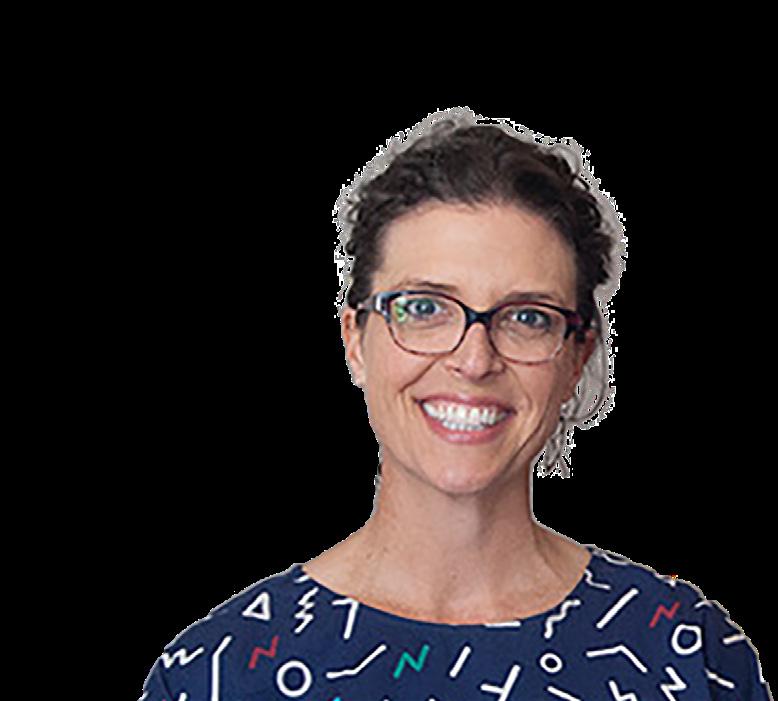
ANGIE BRUCE
I’ve been in clinical practice for 20 years, always driven by a deep curiosity about pain – why it happens, why it presents where it does, and why now. My osteopathic studies at UWS embedded this passion, and further education with Noigroup and the Pelvic Pain Foundation refined my ability to communicate these complex ideas to patients. Becoming an Extended Practice Osteopath was a natural step; I’m always learning, questioning, and evolving my approach. I love that this role formally recognises that dedication while also helping patients navigate the healthcare system more effectively. My practice blends manual therapy, pain education and functional rehabilitation with insights from meditation and mindfulness. It’s a privilege to work at the coalface of patient care, helping people make sense of their pain and their path forward.
ADVANCED PRACTICE
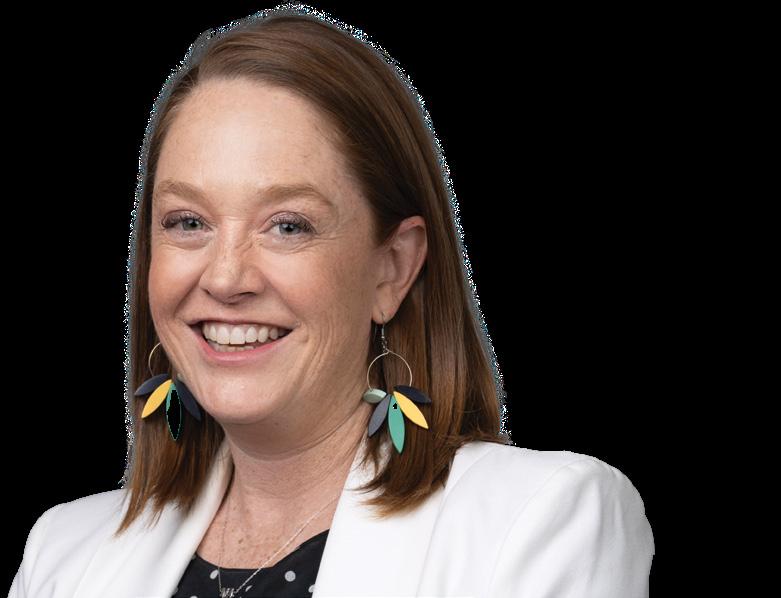
ALISON SIM
I am an osteopath who has undertaken a master’s degree in pain management, and I am currently completing a PhD in the area of early interventions to prevent chronic pain. I work part-time in clinical practice, treating patients with chronic pain. I became an Advanced Practice Osteopath to support this important endeavour for Osteopathy Australia and the osteopathic profession. I believe that gaining recognition in healthcare requires the profession
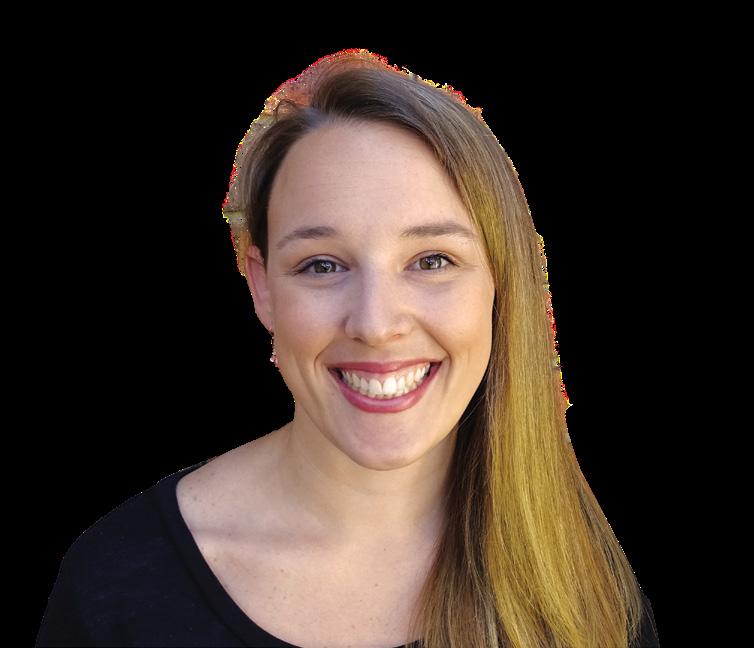
CLAIRE RICHARDSON
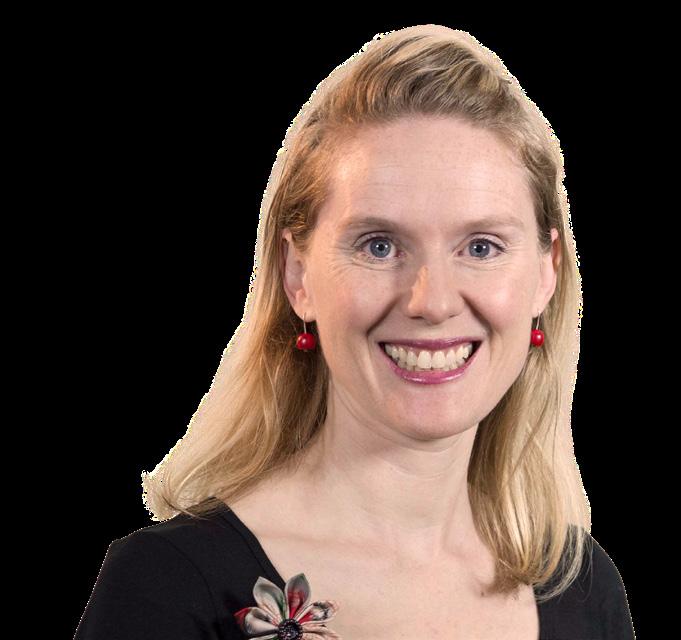
ELIZABETH HOWARD

MICHAEL JOHNCO
I chose to become an Advanced Practice Osteopath for the opportunities it has afforded me in the field of chronic pain. Advanced Practice Recognition has allowed me to more easily take up a position within a multidisciplinary pain program by highlighting my knowledge and skills in this area. It has also allowed me to market my private practice work accordingly, and I’ve enjoyed increased referrals from pain specialists and GPs since gaining my Advanced Practice Recognition.
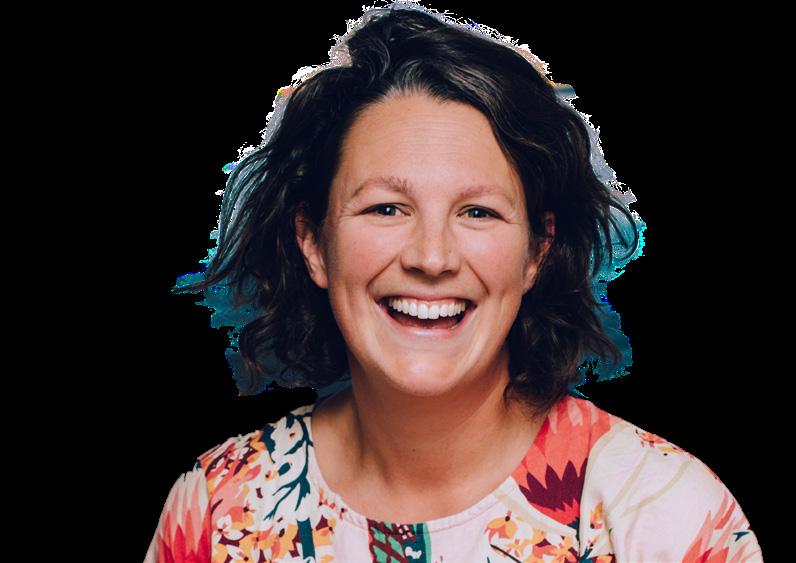
As someone who grew up around people dealing with persistent complex pain, the area of pain management was always of interest to me. Too often, I saw people being treated with a one-size-fits-all approach that was ineffective, expensive and time-consuming. After several years working in private practice, I returned to university to complete my Master of Pain Management at the University of Sydney. Advanced Practice Recognition has helped open doors with patients, other health practitioners, legislators and educators, highlighting my specific skill set for those needing education, upskilling or treatment.
CHARLOTTE BYRNES
My journey as a pain-titled osteopath began about 10 years ago, sparked by a TED Talk by Prof. Lorimer Moseley. His ability to explain pain in an engaging, patient-centred way inspired my deep interest in pain science. This led to a continued commitment to learning and developing my skills. I’m honoured to be part of the multidisciplinary team at Kardinia Health’s Pelvic Pain and Endometriosis Clinic. My Advanced Practice Recognition enabled me to help establish this clinic, empowering patients to understand their pain and take control of their recovery. As an Advanced Practice Osteopath in Pain Management, I’m passionate about raising awareness of pain science within the osteopathic community.
My passion for pain management comes from a deep commitment to improving my patients’ quality of life. Since graduating in 1996 with degrees in Clinical Science and Osteopathic Science, I have focused on understanding and treating pain, particularly in areas such as breast pain, pudendal neuralgia, pelvic girdle pain and pregnancy-related discomfort. In 2015, I completed a Master of Science in Medicine (Pain Management) at the University of Sydney to further my knowledge in this field. I’m committed to educating both patients and practitioners, and to sharing my knowledge both across Australia and internationally.
WHY NOT JOIN US?
Advanced Practice
Recognition can be gained in the following areas:
• Paediatrics
• Sports Management
• Exercise-based
Rehabilitation
• Occupational Health
• Pain Management


LOCAL GROUPS: COMING TOGETHER AND BUILDING A LOCAL OSTEOPATHIC COMMUNITY
BY TOBY BARKER
As osteopaths in Australia we are, unfortunately, a small community in a big country! Networking with other osteopaths and allied health practitioners, accessing CPD and having a sense of a professional community can often be very challenging, particularly for those in rural communities. Coming from the UK, where proximity and density are a blessing, local osteopathic groups are commonplace and there are a number of local groups –some even large and well-established enough to run their own annual conferences!
Having an active osteopathic community has several benefits: access to CPD; sharing of knowledge and experience; allowing osteopaths, especially new graduates, to feel part of a professional community; and, of course, healthy debate, which drives critical thinking, reflection and development. Also, inter- and intra-professional networking, and acknowledging areas of clinical interest and expertise, allow referral networks to be established. A sense of osteopathic identity and community, as well as actively making ourselves visible to the wider healthcare community, is ultimately a driver for a stronger, more well-established profession recognised more widely by the healthcare community and the general public.
Upon moving from the UK to Wollongong in 2022, I soon realised that CPD was no longer easily accessible and, for a surprisingly large community of around 50 osteopaths, the Illawarra had no local group. My equallyas-inquisitive and knowledge-hungry good friend Lauren Griffiths and I decided that we would take it upon ourselves to set one up: the Illawarra Osteopathic Group. Our aim was simply to create a space to bring together the local osteopathic community to network, share expertise and knowledge, and promote best practice
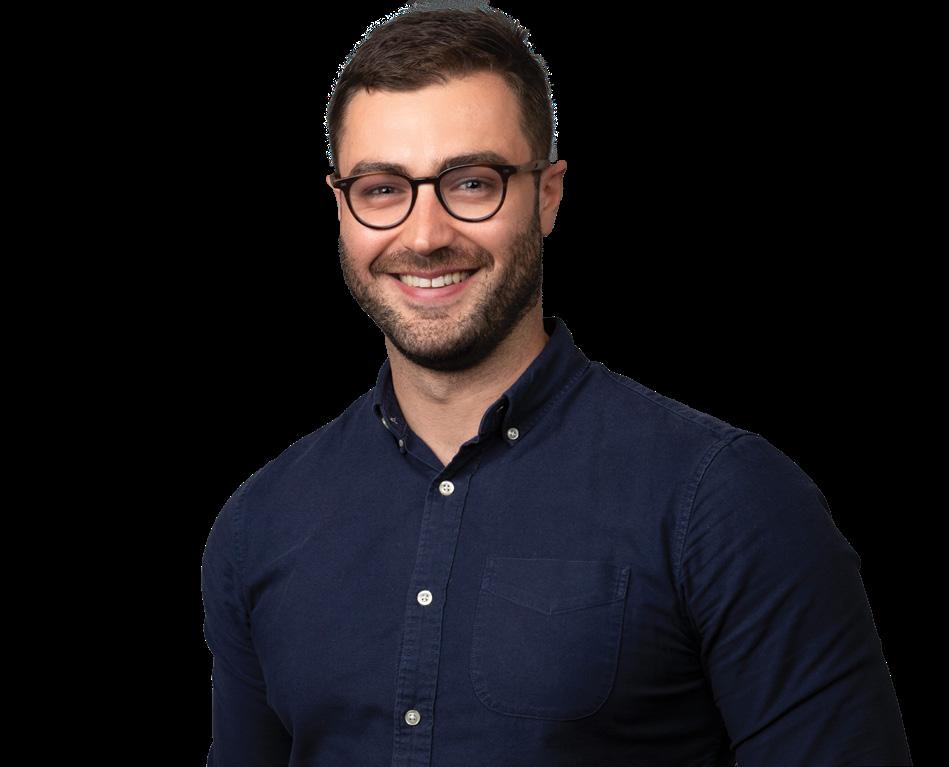
in osteopathic care. We meet roughly quarterly at the Illawarra Brewery, and talks are given by either members with an area of clinical interest or external speakers from the wider healthcare community. Around $10–$20 each covers the cost of room hire, and we usually meet for 1.5–2 hours. Since we started, local osteopaths have presented on cervical artery dysfunction, pain science and education, visceral osteopathy, an upper limb anatomy revision masterclass, and medical imaging.
We’ve also been fortunate to have a local psychologist, and vestibular and sports physiotherapists, talk about psychologically informed practice, dizziness, vertigo and tendinopathies. The latter have provided us with an excellent opportunity to expand referral networks and demonstrate our willingness to acknowledge the role of multidisciplinary care as an osteopathic profession. In addition, our Facebook page acts as a forum to share relevant CPD and ask for advice.
It’s not easy and does take some organising, but building local networks like this can be incredibly valuable, so why not think about it? Contact your colleagues, get together, share challenges, experience and wins, support our new graduates and promote your local osteopathic community to the wider healthcare network!
If you run, are part of, or are looking to start an osteopathic group in Australia we’d love to hear from you and put the spotlight on what you’ve been doing in our coming issues!
Please contact comms@osteopathy.org.au























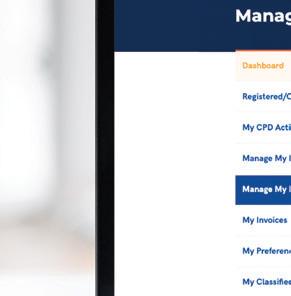


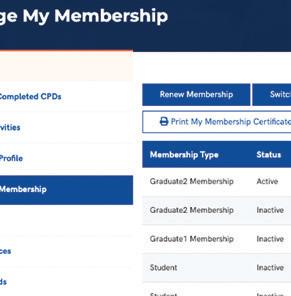
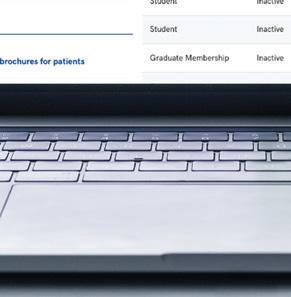

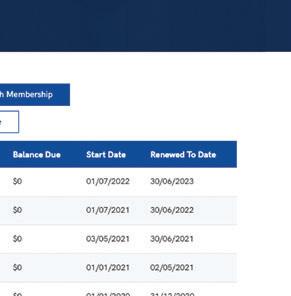
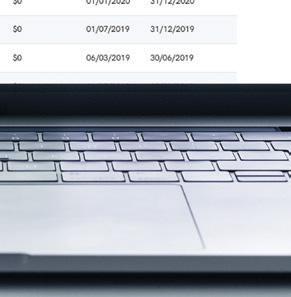













CITY LIVING, COUNTRY PRACTICE: FINDING BALANCE AS A NEW GRAD
KATRINA BAKKER SHARES HER EXPERIENCE MOVING INTERSTATE AFTER UNIVERSITY
Looking back on my journey over the past year and a half, I can honestly say it’s been an exciting and rewarding experience as I’ve transitioned from studying to practising osteopathy. Moving to a new state, building a patient base, and working with a multidisciplinary team in a semi-rural area south-west of Sydney has been a real period of growth for me. I’ve learned so much about osteopathy and myself, and I feel incredibly grateful for the opportunities I’ve had so far.
WORKING IN A MULTIDISCIPLINARY CLINIC
One of the biggest aspects that has helped me grow as an osteopath has been the opportunity to work in a multidisciplinary clinic. Being surrounded by various healthcare professionals has opened my eyes to the many ways osteopathy can complement other types of care. The collaborative environment here has been fantastic, and it’s given me confidence knowing that I can refer patients to other specialists when needed. I feel good that the team works together to ensure our patients
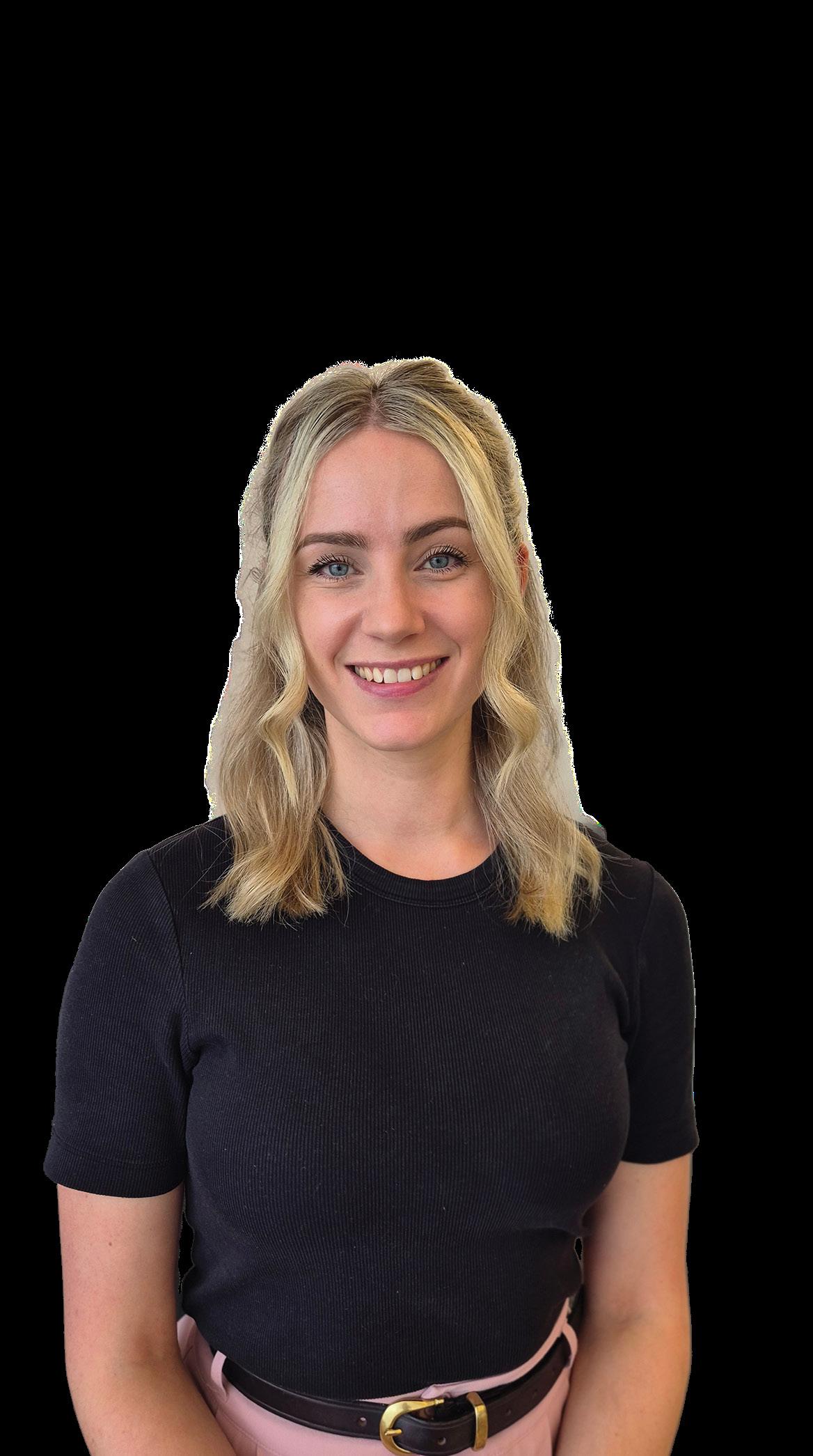
various treatment approaches can work together to benefit patients. It has been a relief to realise I don’t have to handle every patient’s care independently. These other modalities contribute to the patient’s overall wellbeing, which in turn supports my work. This experience has helped me recognise the importance of viewing treatment holistically and seeing how everything fits together.
MENTORSHIP
FOUR KEY PIECES OF ADVICE
Seek out mentorship: Find a mentor who is invested in your growth. Determine what type of mentorship works best for you and your learning style.
Step outside your comfort zone: Don’t be afraid to take on new challenges or move to new places to grow. This approach could mean relocating, taking on different roles, or tackling complex cases that push you to expand your skills.
Build a strong professional network: Connect with other osteopaths and healthcare professionals. A strong network provides support and opens opportunities for collaboration, learning and referrals.
Stay open to learning: Stay curious, keep learning, and adapt your approach as you gain more experience. Whether through CPD, reading, or handson practice, always be open to expanding your knowledge to improve your skills and provide better patient care.
I have been lucky to have the mentorship and support of Dr Adam Nicholson (osteopath) while starting my early career. I was drawn to his clinic because of Adam’s passion for osteopathy and his enthusiasm for teaching new graduates. At the start of my time here, I had the opportunity to shadow Adam by sitting in on his patient consultations or co-treating during times when I didn’t have patients of my own. This approach allowed me to observe his approach, both in terms of treatment and communication with patients. I’ve shared many of the insights I’ve gained from Adam with my friends who graduated alongside me so we can keep supporting each other as we navigate our careers. Now, we have weekly lunch catch-ups where we chat about patient cases, research, and anything healthrelated. These discussions have helped me expand my understanding of overall health and wellbeing. I still occasionally pop into Adam’s treatment room to assist with tricky cases. We occasionally do a spontaneous practice session during lunch breaks to review any areas I struggle with. I love how excited he is to help me continue learning, and I appreciate how much time he’s dedicated to guiding me through my early career. This unstructured approach has worked well for me and my learning style. However, mentorship comes in all forms, so it is important to consider various mentorship structures and find what works for you. You will feel confident and supported as long as you find a clinic that is as invested in your learning as you are.
“To anyone starting their osteopathic career, I recommend taking the opportunity to step outside of your comfort zone.”
EXPLORING NEW OPPORTUNITIES IN A NEW CITY
Moving from Melbourne to Sydney has opened up a whole new world of opportunities for me. While I understand that not everyone has the flexibility to move to a new city, it was an exciting challenge for me. I’ve been able to experience how osteopathy is perceived in an area where it isn’t as widely known, which has been both a challenge and a rewarding experience in its own right. On top of building my practice and developing my skills, I often found myself as a spokesperson for the profession. Explaining what osteopathy is and how it can help patients while I was still finding my footing added an extra layer of pressure. It required a lot of patience and confidence. Still, it has also been a valuable learning experience that has helped me
grow as a practitioner and an advocate for the profession. Moving states has also caused me to face several challenges. Starting my career in Sydney, where I did not know any other osteopaths, has been difficult, and I often found myself missing the support of my uni peers. Having a way to connect with other osteopaths in the area would have benefited me at the start. The clinic is also in a semi-rural area, so I chose to live in the city to give myself balance. While the experience has been rewarding, it wasn’t without its moments of feeling isolated or out of my comfort zone. Navigating a new environment, both personally and professionally, took time, but it has helped me build resilience and adapt to new situations.
ADVICE TO NEW GRADUATES
To anyone starting their osteopathic career, I recommend taking the opportunity to step outside your comfort zone. Don’t be afraid to take on roles or move to places that challenge you. Sometimes, it’s worth changing your life or even travelling a little further for a job supporting your growth and development in the early stages of your career. There’s so much to learn; the more open you are to different experiences, the more you’ll grow. Finding a place that genuinely cares about helping you develop as a practitioner is worth taking the leap. Looking ahead, I’m focused on continuing to build on the foundation I’ve established so far. I look forward to further developing my skills and knowledge as I progress. To new grads, it can sometimes be challenging, but be open to exploring new opportunities. I wish you all the best in starting the journey.
THANK YOU, DON HUNTER
As Don Hunter steps down from his role on the Osteopathy Australia Board, we extend our gratitude for his commitment, leadership and invaluable contributions to the profession.
A passionate advocate for research, Don’s motivation for joining the Board was evident from the beginning. As an active member of the Research Committee and more recently as Chair, Don has thrown his support behind the ongoing improvement of the research grants – both seed and project funding –driving these initiatives that will strengthen the evidence base for osteopathy in Australia. One of the most significant developments during his tenure is the soon-to-be-launched $100,000 research funding program, an investment that will yield lasting benefits for the profession.
While he was not directly involved in establishing the osteopathy course at Edith Cowan University, Don has been a strong supporter of the profession’s growth and expansion. His tenure on
the Board has given him a deeper appreciation for the extensive work undertaken by Osteopathy Australia and the dedication of its staff in advocating for osteopaths across the country.
Reflecting on his time on the Board, Don encourages osteopaths who wish to influence the direction of the profession to step up, get involved, and contribute. “The success of Osteopathy Australia relies on the support and engagement of its members. Whether through Board nominations, committees or working groups, there are many opportunities to make a difference.”
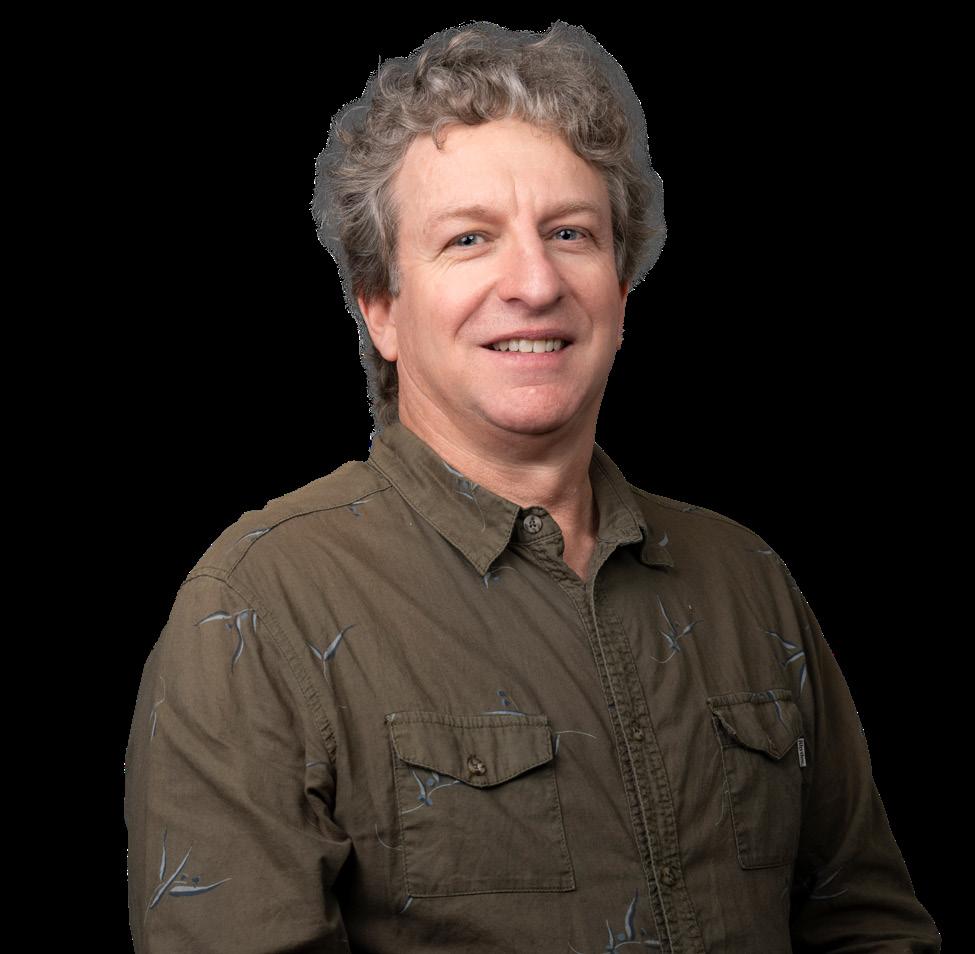
Osteopathy Australia CEO Antony Nicholas praised Don’s contributions, stating: “Don is a humble man who has been a great asset to the Board. His research dedication and strategic focus on the needs of members have played a key role in advancing osteopathy in Australia. We sincerely thank him for his service and the impact he has made.”
Don leaves with the satisfaction of knowing he has played a role in helping to shape the profession’s direction and has an even greater respect for the behind-the-scenes work being done.
Thank you, Don, for your service to Osteopathy Australia and the profession.
MAXIMISE YOUR MEMBERSHIP: SAVINGS, BENEFITS AND BUSINESS SUPPORT
Your Osteopathy Australia membership isn’t just about professional support – it’s a powerful tool for career growth, business success and serious dollar savings. But are you using everything available to you? Here’s how to make the most of your membership in 2025.
1. UNLOCK BIG SAVINGS WITH YOUR MEMBER REWARDS PROGRAM
As a valued member, you can enjoy exclusive access to a range of discounts, benefits and offers. Start saving on groceries, fuel, health insurance, tech products, white goods, sporting goods, motor vehicles and so much more! Available online, 24/7.
2024 member spending and savings Osteopathy Australia members spent over $55,100 through Member Advantage, unlocking $8,200 in savings.
More members unlocked savings in 2024:
• eGift card spending soared to $41,000, generating $3,400 in savings;
• Top purchases included Coles, Super Retail Group, Airbnb, Myer and Event Cinemas;
• Retail savings across home appliances, travel and fitness increased as more members took advantage of discounts.
2. NEW AND EXCLUSIVE BENEFITS WERE INTRODUCED IN 2024
Member Advantage expanded savings in 2024, adding exciting new benefits:
• Travel discounts – save at 850,000+ hotels worldwide;
• Fitness and wellness – discounts at Goodlife and Fitness First (15% off 12- & 18-month memberships up to 31 August 2025);
• Meal subscriptions, including:
o Youfoodz – up to 40 per cent off box one, 30 per cent off box two, 20 per cent off box three;
o EveryPlate – up to $190 off the first five boxes;
o Hello Fresh – up to 40 per cent off box one, 30 per cent off box two, 20 per cent off box three.
• Retail & lifestyle:
o Luggage discounts – Samsonite, High Sierra & American Tourister;

o Shoes – 20 per cent off Crocs (ends 31 December 2025), 15 per cent off full price Hush Puppies styles;
o Endota Spa – 10 per cent off eGift Cards, 20 per cent off products.
• Financial services, including:
o Webb Financial – free initial consultation + 15 per cent off service
o NM Insurance – boat, bike and caravan insurance
o Allbanx Finance Solutions – exclusive offers for members
Make sure you’re taking full advantage of these savings and more! Access via your Dashboard.
3. BUSINESS AND CAREER SUPPORT
HR and career development, including:
• HR Advisory Service – get expert guidance on recruitment, contracts and compliance. Whether you’re recently graduated or a business owner, there’s support for you;
• NEW Career Hub – job listings, career guides and transition pathways;
• NEW classified and job pages – connecting you to jobs, equipment and office space for sale, lease or hire.
Industry discounts
Take advantage of member-only pricing from our key industry partners:
• Cliniko, Zanda (formerly PowerDiary) and OPC Health – preferred rates on software and supplies;
• Guild and Guild Super – insurance and financial services tailored to osteopaths at discounted prices;
• BioCeuticals and FlexEze – professional pricing on health products to sell in your clinic;
• DrRest and Brooks Shoes – exclusive discounts.
4. CPD, LEARNING AND PROFESSIONAL DEVELOPMENT
• Free live webinars – attend at no cost and earn CPD points;
• On-demand learning – watch webinar recordings anytime;
• Archived CPD content – access a growing library of past educational materials.
5. AMPLIFY YOUR PROFESSIONAL PRESENCE
Update Your Find an Osteo profile
Potential clients are using Find an Osteo, yet many members aren’t listed on this valuable search tool. Keep your Find an Osteo profile updated so potential customers can find you easily.
Showcase your membership
Download your Osteopathy Australia membership badge: log into your profile, scroll down the page, and click on ‘Your membership downloads’. Display the logo, available on your Dashboard, on your website profile and marketing materials.
6. STAY CONNECTED AND INFORMED
Tailor your communication preferences
Choose which updates you receive:
• Advertising Marketplace (fortnightly) – jobs, external CPD courses and business promotions;
• Osteo Brain – CPD updates (first Wednesday of every month) – webinars, podcasts and online learning;
• Osteo Matters (last Thursday of every month) – key industry news;
• Important member updates (as required) – regulatory and membership updates.

Join the online osteopathy community:
• Facebook Member Forum – a closed space for members to network;
• Facebook, Instagram and LinkedIn – stay engaged with the profession;
• TikTok coming soon? We want to hear from you if you think we should be on TikTok!
Your Osteopathy Australia membership is packed with value – make sure you’re making the most of it.
Explore all your member benefits now at osteopathy.org.au/membership/memberbenefits

TAKE ACTION TODAY AND START SAVING!
✔ Update your Find an Osteo profile ✔ Download and display your membership badge
✔ Access Career Hub and HR resources (eligible members)
✔ Customise your communication preferences
✔ Start using your industry and member rewards and save $$$!
✔ Join your online osteopathy communities

PERFORMANCE APPRAISALS
Performance appraisals are an important part of effective workplace management, serving as a structured evaluation process where an employee’s job performance and overall contribution to the organisation are assessed. These appraisals should be undertaken by all employers, as they offer valuable feedback, help identify areas for professional growth, and align individual goals with organisational objectives.
This article will dive into the importance of performance appraisals, the general process, key tips, and the potential consequences for neglecting this process.

WHY ARE PERFORMANCE APPRAISALS IMPORTANT?
Performance appraisals are not only critical for establishing a structured evaluation process but also for fostering a culture of continuous improvement and maintaining high standards. Additionally, performance appraisals shouldn’t be viewed solely as tools aiding employers, as the benefits also extend to employees. These benefits are detailed ahead.
Employers
Performance appraisals provide a structured way for employers to assess an employee’s productivity, address areas needing improvement, and identify the business’s top performers. This helps when making informed decisions about promotions, training and resource allocation, and therefore increases overall organisational efficiency.
Employees
On the other hand, appraisals offer employees valuable feedback, clarity on expectations and, at times, recognition for their work. As a result, not only can this help boost morale and increase satisfaction, but employees are provided better guidance on career development which can lead to a more motivated and engaged workforce.
HOW TO CONDUCT PERFORMANCE APPRAISAL INTERVIEWS
Most employees want to know how they’re doing. Regular performance appraisals should meet this need and more. At least annually, employees and managers should review past performance and set future goals. The most effective sessions are straightforward and encourage open dialogue. Here are some steps to follow when conducting a performance appraisal interview.

1. Prepare for the session
The first step is thorough preparation. Employers should gather all necessary information, including performance metrics, completed projects and feedback from colleagues. Equally important, employees should be encouraged to prepare by reflecting on their achievements, challenges and goals.
2. Acknowledge employee successes
Give full and generous acknowledgement for satisfactory performance, and special emphasis to above-average achievements. Indicate your intention to build upon these personal strengths.
3. Identify and agree on areas needing improvement
Secure the employee’s commitment to addressing areas needing attention, focusing on no more than two or three key areas. Explain the importance of improvement, define it in measurable terms where possible to allow for gauging improvement, and document the actions to be taken. Ensure the process is thorough and involves significant employee input, as it’s important for an employee to “buy in” to the process and feel motivated to improve.
4. Establish future directions
Focus on the future rather than the past. Spend most of the time discussing the employee’s next steps and agreeing on new goals or standards, along with an action plan. Determine how you can support any necessary training and update the job description if needed. Document the outcomes and include them in the employee’s file. This list will serve as the foundation for the next performance appraisal.
TIPS ON CONDUCTING PERFORMANCE APPRAISALS
Establish a clear job description
Having a robust job description is crucial for performance appraisals as it provides a clear framework for evaluating an employee’s performance. A detailed job description ensures that both the employee and employer have a mutual understanding of the role, facilitating objective assessments and focused discussions during appraisals. This clarity helps in setting realistic goals and identifying areas for improvement.
Encouraging two-way communication
Create an environment where the employee feels comfortable sharing their perspectives and feedback. Encourage them to discuss their achievements, challenges and goals. This dialogue not only makes the appraisal process more interactive but also provides insights into how the employee perceives their role and any support they might need.
Having regular follow-ups
Schedule regular follow-up meetings to review progress on the goals set during the appraisal. Employers can consider more frequent, smaller meetings, such as quarterly check-ins, to monitor progress throughout the year. Continuous feedback helps ensure employees stay on track and address issues promptly, fostering a culture of continuous improvement and support.
“Having a robust job description is crucial for performance appraisals as it provides a clear framework for evaluating an employee’s performance.”
WHAT ARE THE CONSEQUENCES OF NOT CONDUCTING PERFORMANCE APPRAISALS?
Decreased employee morale
Without regular performance appraisals, employees may feel undervalued and overlooked. This can lead to decreased motivation and job satisfaction, as employees might not receive the recognition and feedback they need to feel appreciated and to develop in their role. Over time, this leads to lower morale and higher turnover rates.
Lack of goal alignment
Regular performance appraisals help align individual employee goals with organisational objectives. Without them, employees may lack direction and clarity about what is expected of them. This misalignment can result in wasted efforts on tasks that do not contribute to the company’s strategic goals, reducing overall effectiveness.
Poor decision-making
Performance appraisals provide valuable data for making informed decisions regarding promotions, raises, and training needs. Without this information, employers may struggle to identify top performers and areas needing development, leading to biased or uninformed decisions that can negatively affect team dynamics and company performance.
IN SUMMARY
Overall, performance appraisals are essential for fostering employee growth and organisational efficiency in an organisation by providing a structured way to evaluate performance, offer feedback, and set future goals. Employers are encouraged to review their current performance appraisal systems to ensure they get the most out of their employees, by referring to the free resources available on the HR Portal.
If you have any questions about this article, please contact the Osteopathy Australia HR Service on 1300 143 602, or via email at HRHotline@osteopathy.org.au

AI SCRIBES IN OSTEOPATHY: THE FUTURE
OF CLINICAL NOTES
In the evolving healthcare landscape, osteopaths are increasingly challenged by administrative tasks that can detract from direct patient care. Clinical note-taking, a critical aspect of practice, often consumes considerable time and can contribute to clinician fatigue. Emerging technologies, such as AI scribes, offer promising solutions to streamline documentation, enabling osteopaths to focus more on patient care.
THE ADMINISTRATIVE CHALLENGE IN OSTEOPATHY
Clinical documentation serves as an essential component of osteopathic practice, supporting patient management, legal compliance and interdisciplinary communication. However, managing these tasks can extend into personal time, impacting work-life balance and potentially contributing to burnout.
Research indicates healthcare professionals may spend up to 30 per cent of their time on administrative duties. For osteopaths, this often means late nights completing notes, drafting referral letters and managing treatment plans, leading to fatigue and reduced patient engagement.
There are a number of AI scribes on the market. After receiving feedback from a member, Osteopathy Australia decided to road test Heidi, an AI scribe for osteopaths. Hardy Health developed Heidi to help address these administrative pressures. Designed with input from healthcare professionals, Heidi aims to align with the specific workflows of osteopathic practitioners.

“Research indicates healthcare professionals may spend up to 30 per cent of their time on administrative duties.”
Real-world application: a clinic’s experience with Heidi
Catherine Rideout, a practising osteopath in Geelong, took the initiative to road test Heidi in her clinic to manage increasing documentation demands. Prior to using the AI scribe, Catherine often worked overtime handling administrative tasks.
Before fully integrating Heidi, Catherine conducted a mock consultation with a simulated patient presenting with chronic low back pain and radicular symptoms to assess the software’s effectiveness. Heidi accurately transcribed the consultation, capturing essential clinical details and producing a comprehensive clinical note. Catherine praised Heidi’s ability to swiftly generate referral letters, treatment plans and follow-up summaries, allowing her to deliver more seamless and attentive patient care. Additionally, she valued Heidi’s capability to recall specific patient instructions, such as exercise cues, which enhanced consistent care across multiple sessions.
Key benefits that she observed after integration included:
• Time savings – Catherine reported saving 1–2 hours daily through automated note-taking;
• Enhanced efficiency: Heidi enabled faster generation of referral letters and treatment summaries, improving communication with other healthcare professionals;
• Customised documentation – Catherine used Heidi’s customisable templates to align with her detailed note-taking and patient education practices.
• Improved patient engagement –with administrative tasks streamlined,
PRIVACY, SECURITY, AND COMPLIANCE CONSIDERATIONS
Adopting AI tools in healthcare necessitates robust data protection and compliance strategies. Essential considerations for implementing AI scribes include:
Catherine could focus more on patient communication and care;
• Recall feature –Heidi’s ability to recall specific exercise instructions and clinical details ensured consistency in follow-up care.
To prioritise patient comfort and transparency, Catherine established clear patient consent procedures. She provided informative materials in her clinic, utilised consent forms, and displayed a visible sticker on her computer to remind patients of Heidi’s presence. Catherine also reassured patients by clarifying that personal conversations unrelated to treatment were excluded from clinical documentation, fostering trust and openness.
AI scribes like Heidi represent a pivotal shift in how osteopaths manage clinical documentation. By reducing administrative burdens, practitioners can focus more on patient care, mitigate burnout, and improve work-life balance. Hardy Health offers free trials of Heidi, enabling osteopaths to experience its benefits first-hand. For those seeking to reclaim time and enhance patient engagement, Heidi could be the solution that reshapes their clinical practice.
For more information and to start a free trial, visit heidihealth.com
• Secure data storage – ensuring patient data is stored on encrypted and secure servers in compliance with relevant legal standards;
• Data privacy – implementing measures to protect sensitive information, such as avoiding unnecessary storage of audio or raw data;
• User data control – providing healthcare practitioners with full control over their data, including the ability to manage and delete records as needed;
• Informed patient consent – obtaining clear and explicit patient consent prior to using AI tools during consultations, aligning with professional and legal guidelines.
CONSIDERATIONS
While AI scribes offer significant advantages, clinicians should approach their use thoughtfully. Auto-generated notes must always be reviewed for accuracy, and ongoing updates in integration capabilities will warrant practitioner awareness. Clear communication with patients about the use of AI in consultations is also crucial for building trust and transparency.

MOVEMENT AS MEDICINE: ADDRESSING SYSTEMIC INFLAMMATION IN OSTEOPATHIC PRACTICE
REVIEW BY TOBY BARKER
This article is a review of Dr Frank Willard’s presentation at the Osteopathy Australia conference, summarising key insights on systemic inflammation and the role of movement in health.
About Frank Willard
Frank Willard, PhD received his doctoral degree in Anatomy and Neurobiology from the College of Medicine at the University of Vermont, and completed three years of postdoctoral training in the Department of Anatomy at the Ohio State University College of Medicine. He joined the Anatomy Department at the University of New England College of Osteopathic Medicine in 1983, where he is now a Professor. Currently, he is the Discipline Director for Anatomy, and the Course Director for Osteopathic Medical Anatomy and Medical Neuroanatomy. He is ranked as a Master Instructor in the International Pain and Spine Intervention Society, has served as the Basic Science Editor for the Foundations of Osteopathic Medicine text, and his research has focused on spine anatomy and spinal pain.
Recent insights into systemic inflammation highlight its profound role in chronic disease progression, with low-grade, persistent inflammation now recognised as a primary driver of conditions ranging from cardiovascular disease to depression and muscle wasting.1 In his recent address at the Osteopathy Australia conference, Dr Frank Willard, discussed the key elements of this type of inflammation and presented compelling insights into physical activity as an antiinflammatory intervention.2 His findings resonate with osteopathic principles, highlighting movement and lifestyle as powerful tools to help patients “find health” beyond symptom-focused treatments.
LOW-GRADE SYSTEMIC INFLAMMATION: A HIDDEN DRIVER OF DISEASE
Unlike the acute inflammation triggered by injury, lowgrade systemic inflammation – often described as “smouldering” – develops quietly and can persist for years without notable symptoms.3 Over time, however, this form of inflammation contributes to a range of chronic health issues, subtly impacting multiple systems and reducing overall vitality.4
Dr Willard outlined several lifestyle and environmental factors that accumulate over time to create this persistent inflammatory state, collectively referred to as the “exposome.” These drivers include:
• Excess Adipose Tissue: Body fat, particularly white adipose tissue, generates pro-inflammatory compounds that enter the bloodstream, creating a state of metabolic stress. This process, Dr Willard notes, places ongoing strain on capillary networks in adipose tissue, leading to an oxygen-deprived, or anoxic, state that exacerbates inflammation and impairs tissue health.
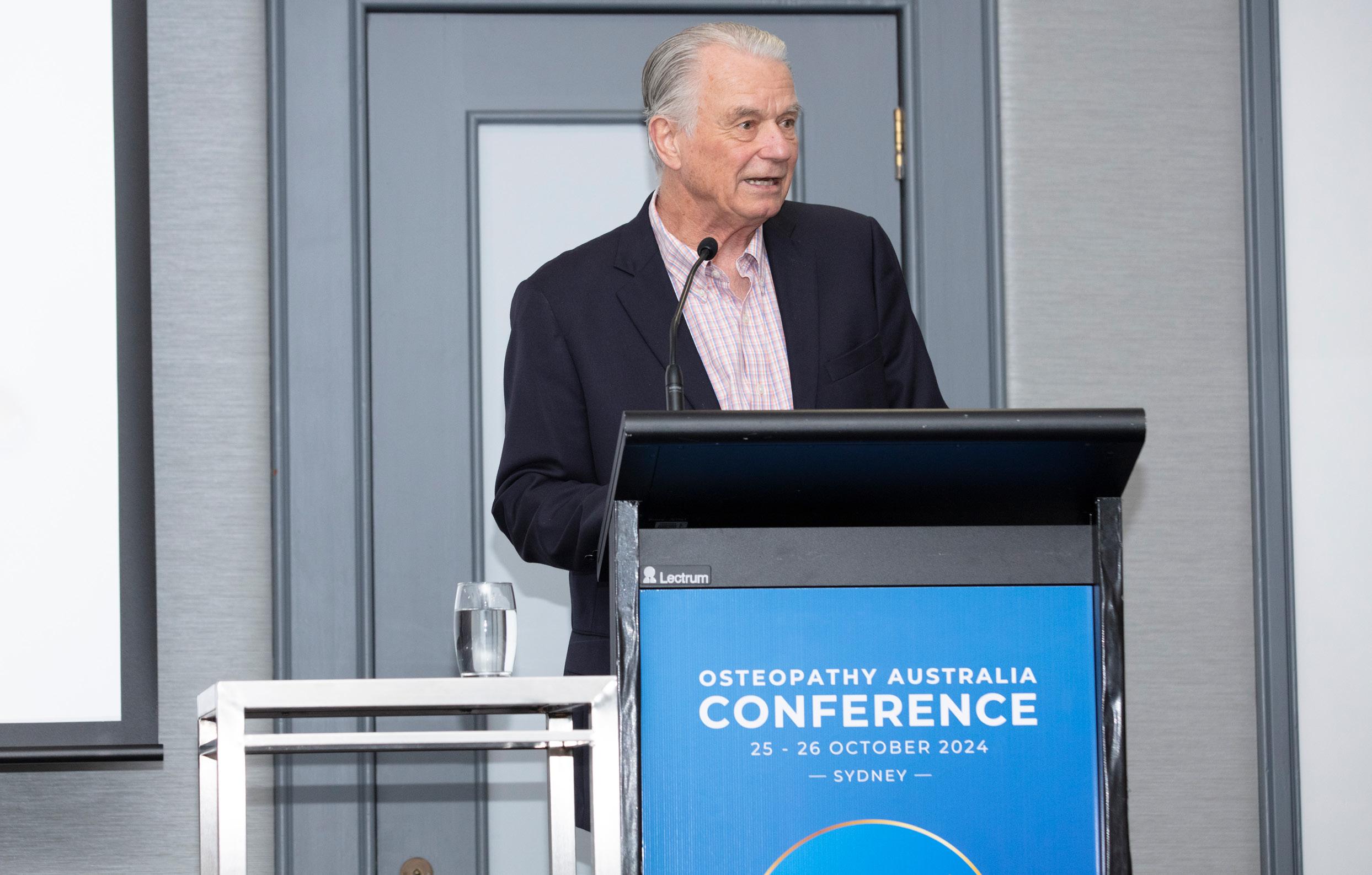
• Western Diets and Gut Health: Diets rich in processed foods, sugars and low fibre can disrupt the gut’s microbial balance, resulting in “leaky gut”, where inflammatory compounds enter the bloodstream. Gut dysbiosis is now recognised as a significant contributor to systemic inflammation and is implicated in a wide range of chronic conditions. Willard noted in the Q&A that while probiotics are often promoted as a solution, not all have a uniform impact on inflammation, and individual responses vary. He reminded practitioners to advise patients cautiously.
• Environmental Pollutants: Exposure to environmental toxins like air pollutants and chemicals can disrupt cellular processes, contributing to inflammation in the long-term.
• Sedentary Lifestyles: A lack of regular movement compounds inflammatory processes, as physical inactivity weakens metabolic functions and increases body fat, fuelling the inflammation seen in metabolic syndrome and other chronic diseases. Dr Willard clarified in the Q&A that while some weight-loss medications, like semaglutide, indirectly impact inflammation through weight reduction, exercise remains a more direct and effective intervention for reducing inflammation.
These factors contribute to a chronic inflammatory load that is particularly prominent as individuals age - a process he termed “inflammaging.” Dr Willard noted that markers of inflammation, such as C-reactive protein (CRP) and interleukin-6 (IL-6), tend to rise after age 50, correlating with an increased risk of age-related illnesses, including cardiovascular disease, cognitive decline and sarcopenia (muscle loss). By addressing this underlying inflammation, osteopaths have an opportunity to positively influence patients’ overall health, reducing the risk and progression of many age-related conditions.
“Unlike the acute inflammation triggered by injury, low-grade systemic inflammation –often described as ‘smouldering’ –develops quietly and can persist for years without notable symptoms.”
THE IMPACT OF INFLAMMATION ON KEY BODILY SYSTEMS
Systemic inflammation affects several core systems, with the cardiovascular, musculoskeletal, and nervous systems particularly vulnerable:
• Cardiovascular system: Chronic inflammation can drive the development of atherosclerosis. Dr Willard
“Studies have shown that even moderate physical activity, such as 30 minutes of brisk walking or light cycling, significantly reduces CRP, TNF-alpha, and other inflammatory markers after as little as 12 weeks.”
Regular exercise also improves insulin sensitivity and enhances immune function, creating a positive feedback loop that reduces systemic inflammation.7 Studies show even moderate physical activity, such as 30 minutes of brisk walking or light cycling, significantly reduces CRP, TNF-alpha and other inflammatory markers after as little as 12 weeks.8 These findings reinforce the value of physical activity for managing inflammatory conditions and support its inclusion as a standard recommendation in osteopathic care. Dr Willard elaborated on the specifics of exercise during the Q&A, recommending moderate activities like brisk walking or cycling as optimal, while cautioning that extreme exercise can elevate inflammation. His guidance underscores the importance of a balanced approach to exercise in clinical recommendations.9
CLINICAL APPLICATIONS IN OSTEOPATHIC PRACTICE
The osteopathic approach to health, with its emphasis on the body’s self-regulatory capacity, aligns well with Dr Willard’s findings. By encouraging physical activity and educating patients about lifestyle factors that drive inflammation, osteopaths can offer a natural, effective means of managing systemic inflammation. Some practical strategies include:
highlighted how pro-inflammatory compounds damage vascular walls, leading to increased blood pressure and plaque build-up. This effect compounds over time, raising the risk of cardiovascular events as the body’s resilience diminishes.
• Musculoskeletal system: Inflammatory processes are also a central factor in muscle wasting, contributing to sarcopenia as muscle tissue is replaced with white fat, further elevating inflammatory markers. According to Dr Willard, inflammation causes immune cells like macrophages to shift to a pro-inflammatory state, accelerating muscle loss and compromising mobility – a downward spiral that osteopaths can address through movement-based interventions.
• Nervous system: The link between inflammation and mental health is also well-documented. Elevated IL-6 and other cytokines are associated with depression and cognitive impairment. Dr Willard explained that this low-grade inflammation influences neurotransmitter pathways, contributing to conditions like major depressive disorder and impacting cognitive health in older adults.
EXERCISE AS AN ANTI-INFLAMMATORY INTERVENTION
Physical activity has emerged as one of the most effective strategies for combating chronic, low-grade inflammation. Dr Willard’s research highlights how exercise acts as a natural anti-inflammatory agent, with muscle contractions stimulating the release of IL-6 and other myokines.5 Unlike chronic IL-6 elevation, which promotes inflammation, the temporary spike in IL-6 during exercise seems to activate antiinflammatory pathways, helping to restore immune balance and support tissue repair.6
• Educating patients on inflammation and lifestyle: Osteopaths are ideally positioned to help patients understand how diet, physical activity and environmental exposures influence inflammation. By explaining the health impacts of an inflammatory lifestyle, practitioners can empower patients to make choices that support their long-term wellness.10
• Prescribing movement as medicine: Dr Willard’s insights affirm the value of exercise as a clinical tool. Osteopaths can develop tailored activity plans for patients, particularly those with arthritis, chronic pain, or other inflammation-related conditions. By recommending moderate, sustainable activity levels, practitioners can help patients decrease inflammatory markers and reduce disease risk. This aligns with findings shared in the Q&A, where practitioners working with COPD patients noted improved breathing mechanics and reduced inflammation markers when osteopathic treatment was paired with exercise. 11
• Managing chronic pain: Chronic pain is often exacerbated by low-grade inflammation, especially in conditions like fibromyalgia, where systemic inflammation activates pain pathways. Dr Willard’s research suggests that exercise can help interrupt this cycle. By promoting gentle, progressive movement, osteopaths can help patients manage pain without relying solely on pharmacological options, addressing both physical and mental aspects of chronic pain.12
EMBRACING MOVEMENT FOR SYSTEMIC HEALTH
Dr Willard’s insights dovetail with osteopathy’s Five Model Concept, which addresses the interconnected aspects of Biomechanical, Respiratory-circulatory, Metabolic, Neurological and Behavioural. Physical movement impacts each of these models, fostering a balance across systems that is crucial for reducing inflammation. Osteopaths, with their unique understanding of body mechanics and the importance of mobility, can play
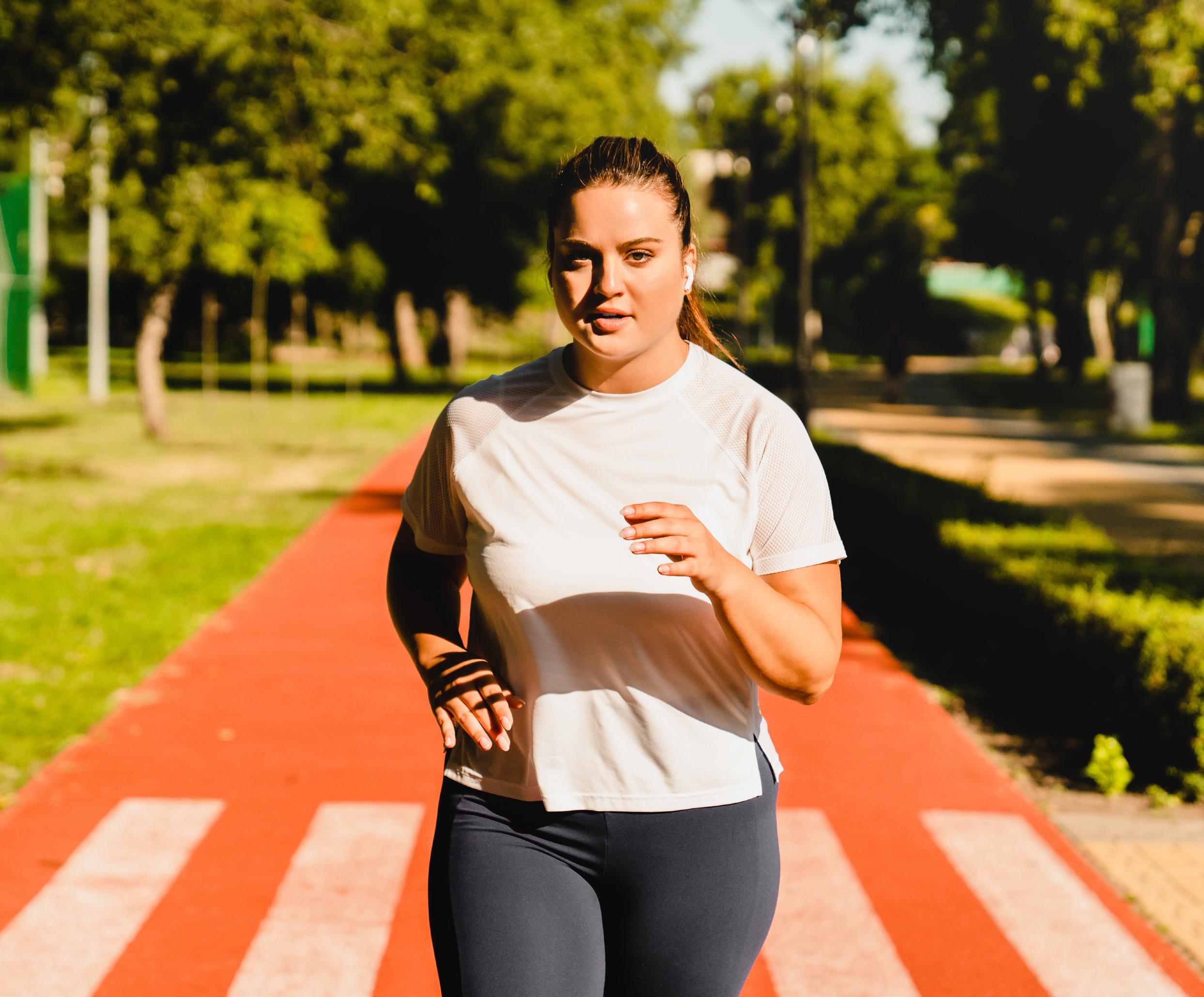
a central role in guiding patients toward healthier, inflammation-reducing behaviours.13
The osteopathic profession’s focus on restoring health through movement offers patients a pathway to managing inflammation and chronic disease.
Dr Willard’s research reinforces the idea that movement is medicine, providing a strong scientific foundation for the osteopathic approach. By integrating physical activity and lifestyle education into treatment plans, osteopaths can help patients find and maintain health, harnessing the body’s own capacity to heal and thrive.14
IN CONCLUSION
Dr Frank Willard’s insights on systemic inflammation provide osteopaths with actionable strategies for managing chronic disease. By advocating physical activity and lifestyle adjustments, osteopaths can address the root causes of inflammation, empowering patients with a balanced, effective pathway to health.
An on-demand video of Dr Willard’s presentation can be purchased here: osteopathy.org.au/events/systemicinflammation--depression-and-exercise-in-healthand-disease
“Dr Frank Willard’s insights on systemic inflammation provide osteopaths with actionable strategies for managing chronic disease.”
Scan for references
To find the full list of references for this article, scan the QR code here.


THORACIC MANUAL THERAPY: A NOVEL ADJUNCT
FOR SHOULDER IMPINGEMENT SYNDROME MANAGEMENT
This feature, summarised by Toby Barker, looks at the recent research by Don Hunter: Hunter D, Rivett D, Snodgrass S. Thoracic Manual Therapy Improves Pain and Disability in Individuals With Shoulder
Impingement Syndrome Compared With Placebo: A Randomized Controlled Trial With 1-Year Follow-up. Arch Phys Med Rehabil. 2022;103(7):1533-43. doi:10.1016/j.apmr.2022.02.012.
S houlder Impingement Syndrome (SIS), an umbrella term for conditions affecting the subacromial space such as subacromial bursitis, rotator cuff tendinitis, and partial or full-thickness rotator cuff tears, is the leading cause of shoulder pain and dysfunction.2,3 The prevalence of SIS increases with age, particularly after 40 years, with over 50 per cent of affected individuals remaining symptomatic after one year and 14 per cent continuing to seek medical intervention after two years.4,5
Traditional treatments for SIS include manual therapy, exercise rehabilitation, corticosteroid injections, and surgical interventions. However, systematic reviews indicate no intervention has demonstrated consistent superiority over placebo.6,7 This has led to increasing interest in alternative approaches that address thoracic spine dysfunction, recognising its potential influence on shoulder mechanics and persistent pain.
STUDY OVERVIEW
A randomised controlled trial (RCT) investigated the efficacy of muscle energy techniques (MET) applied to the thoracic spine, with or without soft tissue manipulation (STM) of
the rotator cuff and triceps, in improving pain, disability and thoracic posture in individuals with SIS.1 The study was conducted at a private osteopathic clinic in Newcastle, New South Wales, using a three-arm parallel design.
Participants:
• Adults aged 40–80 years with SIS symptoms occurring at least three times per week over three months;1
• Disabilities of the Arm, Shoulder, and Hand (DASH) score ≥20;8
• SIS diagnosis confirmed via at least three positive tests: Neer test, Hawkins-Kennedy test, painful arc, empty can test, and external rotation resistance.9
Exclusion criteria:
• Recent trauma, fractures, or surgery involving the shoulder, neck, or spine;1
• Neurological or inflammatory conditions (e.g. rheumatoid arthritis);1
• Health professional treatment received within the prior four weeks.1
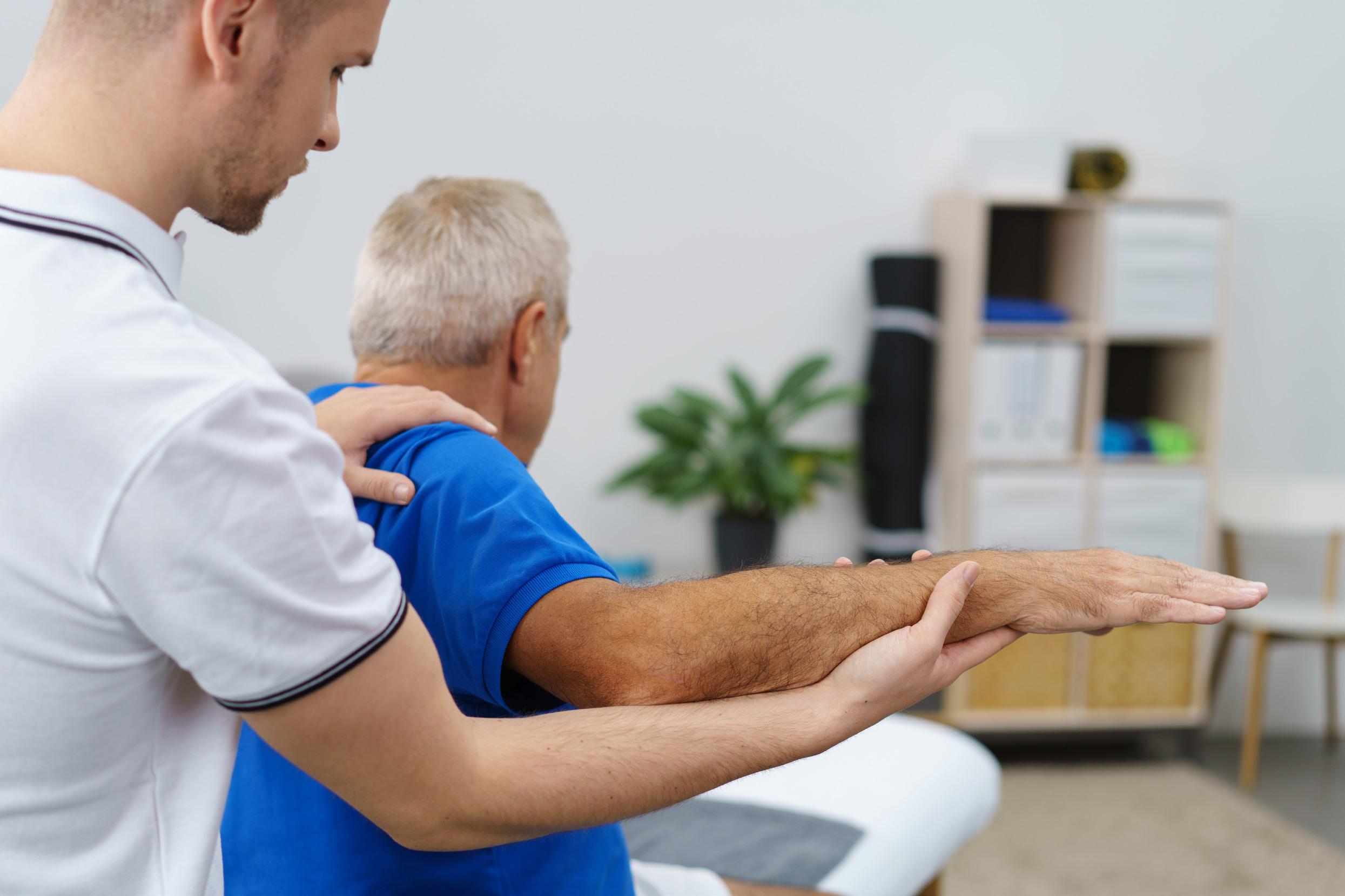
Interventions – participants were randomised (1:1:1) into three groups:1
1. Placebo group – simulated MET with no therapeutic intent;
2. MET group – MET applied to the thoracic spine;
3. MET+STM group – MET combined with STM of the rotator cuff and triceps.
Each participant attended weekly 15-minute sessions for four weeks. All treatments were administered by a single experienced osteopath to maintain consistency.1
Outcome measures:
• Primary measures – DASH, Shoulder Pain and Disability Index (SPADI), and Visual Analogue Scale (VAS) for pain intensity;1
• Secondary Measures – thoracic posture and range of motion (ROM) assessed using inclinometers at baseline and discharge;1
• Follow-up assessments were conducted at one, six and 12 months post-treatment.1
KEY FINDINGS
Pain and disability reduction. Both the MET and MET+STM groups exhibited statistically significant reductions in DASH, SPADI and VAS scores compared to placebo.1 Improvements were sustained across all follow-up periods, indicating long-term efficacy.1 Placebo effects. A notable improvement in the placebo group was observed between discharge and the first follow-up, underscoring the role of patient-practitioner interaction and treatment expectations in pain perception.1
“The study challenges the traditional approach of focusing solely on the shoulder for SIS management.”
Thoracic Posture and ROM. No significant changes were noted in thoracic posture or gross thoracic ROM at discharge in any group, leaving open the question of delayed biomechanical adaptations.1
POTENTIAL MECHANISMS OF ACTION
The sustained improvements seen in the intervention groups suggest an interplay of neurophysiological, biomechanical and non-specific effects:
• Neurophysiological effects. Manual therapy influences central and peripheral pain pathways, modulating nociceptive input and reducing pain perception;1
• Biomechanical effects. While gross thoracic ROM was unchanged, localised segmental mobility improvements may have enhanced neuromuscular control and shoulder kinematics;1
• Non-specific effects: Patient expectations, practitioner experience and the psychological impact of receiving treatment contributed to symptom relief.1
CLINICAL IMPLICATIONS
The study challenges the traditional approach of focusing solely on the shoulder for SIS management. Clinical takeaways include:
• Thoracic manual therapy is a non-invasive intervention that significantly improves shoulder pain and disability;1
• Long-term symptom reduction suggests thoracic MET may offer sustained therapeutic benefits;1
• Addressing thoracic dysfunction aligns with the principle of regional interdependence, highlighting the thoracic spine’s role in shoulder function.1
For clinicians, integrating thoracic manual therapy into standard SIS management protocols may enhance patient outcomes, particularly for those with chronic or recalcitrant symptoms.1
“Long-term symptom reduction suggests thoracic MET may offer sustained therapeutic benefits”
Study limitations and future directions
• The treating practitioner was not blinded to interventions, introducing potential bias.1
• Long-term thoracic posture and ROM measurements were not conducted, limiting insights into sustained biomechanical changes.1
• The study’s single-practitioner model ensured consistency but reduced generalisability.1
• Self-reported measures (DASH, SPADI, VAS) introduce potential variability, despite reducing practitioner influence during follow-ups.1
Future research should explore multi-centre trials, longer-term thoracic assessments, and comparisons to alternative SIS treatments to further delineate the role of thoracic interventions in shoulder rehabilitation.1
CONCLUSION
Thoracic manual therapy, whether applied alone or combined with soft tissue manipulation, significantly reduces pain and disability in individuals with SIS, with sustained improvements up to one year posttreatment.1 These findings advocate for its inclusion as a complementary approach in clinical management strategies. Clinicians are encouraged to adopt a wholebody perspective in treating SIS, particularly in chronic and refractory cases.1
Scan for references
To find the full list of references for this article, scan the QR code here.


NAVIGATING CHANGE: WHAT AHPRA’S NEW OPERATING SYSTEM MEANS FOR OSTEOPATHS
The Australian Health Practitioner Regulation Agency (Ahpra) is implementing a new regulatory operating system, set to launch soon. This upgrade is designed to streamline registration processes, enhance security, and improve the practitioner experience. While the changes aim to increase efficiency, osteopaths should prepare for temporary disruptions.
WHAT’S CHANGING?
Ahpra’s new system will introduce an updated practitioner portal with digital smart forms for new applicants and registration renewals. This transition will make applications faster, more secure and less administratively burdensome. A key improvement is the integration of online biometric identity verification, replacing the previous intensive, paper-based process. The upgrade will also feature an improved ‘Raise a Concern’ online form, enabling easier reporting. Additionally, two-step verification will be implemented to enhance security, alongside a new data collection model for more targeted and efficient information gathering.
WHAT’S STAYING THE SAME?
While the backend technology is changing, some critical elements will remain unaffected. Access to the Register of Practitioners and the Practitioner Information Exchange (PIE) will not change. However, there may be short periods of downtime as the system transitions. Ahpra has committed to providing advance notice of any planned outages, ensuring practitioners can prepare accordingly.
PREPARING FOR THE TRANSITION
Ahpra acknowledges transitioning to a new system is complex and not without risk. While every effort is being
made to minimise disruption, delays and downtime are expected, particularly as teams adjust to the new system.
To ensure patient safety, high-risk and urgent cases will be prioritised. Ahpra also recognises the importance of workforce stability and will work to minimise disruptions for domestic graduates and international applications
WHAT THIS MEANS FOR OSTEOPATHS
For osteopaths, this shift represents an opportunity to embrace a more streamlined and secure registration experience. However, it’s crucial to stay informed about key dates and potential delays. Ensuring all necessary documentation is submitted well before deadlines will help practitioners avoid unnecessary frustration during the transition.
Ahpra has committed to keeping the profession updated, and Osteopathy Australia will continue to provide members with relevant information as it becomes available.
STAYING INFORMED
For further updates, Ahpra will liaise with key stakeholders and provide additional details once a launch date is confirmed. If you have concerns about how this change may impact you, state and territory Ahpra managers are available for direct enquiries.
As the healthcare landscape continues to evolve, osteopaths can expect these technological upgrades to ultimately improve their interactions with Ahpra, making regulatory processes more seamless and secure in the long run. Osteopathy Australia will continue to provide you with relevant updates, ensuring you remain informed and prepared for any changes. Practitioners are encouraged to stay engaged with these updates to navigate the transition smoothly.
PLEASE COMPLETE THE ORION SURVEY
You are essential to the ORION survey. Help grow the evidence base for your profession.
The ORION Project , established in 2016 in partnership with Osteopathy Australia, has helped significantly grow the evidence-base and research capacity of osteopathy across Australia. It is now time to build upon this work and extend the benefits of the ORION Project to contemporary practice.
A big thank you to all those osteopaths who have participated in the ORION Project to this point. Your input has been essential and is much appreciated. However, whether you participated in the previous ORION survey
back in 2016 or not – your participation in 2025 remains essential.
Now is the time to have your voice heard, to help strengthen the research base for the profession and to help build the empirical body of knowledge about osteopathy and related health outcomes relevant for 2024 and beyond.
The ORION survey will take just over 10 minutes to complete.
Please scan the QR code on the right to complete the survey on your smartphone.

CPD CALENDAR
Key dates for your diary throughout the coming months.

WORKSHOPS
17-18 MAY 2025 – 8:30AM TO 4:00PM Mastering shoulders
Presenters: Wayne Rodgers
Location: Victoria University City Tower Register: Via CPD Hub
Link: osteopathy.org.au/events/mastering-shouldersworkshop-melbourne
7-8 JUNE 2025 – 8:30AM TO 4:00PM Mastering shoulders
Presenter: Wayne Rodgers
Location: Bardon Counselling and Natural Therapies Centre, 151 Boundary Road, Bardon Register: Via CPD Hub
Link: osteopathy.org.au/events/mastering-shouldersworkshop-brisbane
OSTEO TALK PODCAST
Podcasts available on Spotify, Amazon Music and Apple Podcasts.
From movement to osteopathy
Host: Dr Tink Gee (Osteopath)
Guest: Dr Paul Hermann (Osteopath)
Link: osteopathy.org.au/articles/preview/51cb1a59-e3fdec11-945c-005056be13b5
Introduction to the March 2025 Board Director election candidates
Guests: Tom Barry, Tayla Lane, Alana Lloyd, Mollie McCarthy and Heath Williams
Link: omny.fm/shows/osteo-talk/introduction-to-themarch-2025-board-director-elec?in_playlist=osteo-talkmembers-only
101 on women’s health with Elizabeth Howard and Lorrae Griffiths part 1
Host: Lorrae Griffiths
Guest: Elizabeth Howard
Link: omny.fm/shows/osteo-talk/101-on-womens-healthwith-elizabeth-howard-and-lor
Understanding practitioner distress: Should regulation be kinder?
Host: Stuart Hammond
Guest: Susan Biggar, National Manager Regulatory Experience and Engagement Ahpra
Link: omny.fm/shows/osteo-talk/understandingpractitioner-distress-should-regulat
The evidence pathway, exploring the origins of the Perrin Technique
Host: Dr Amanda Oosterweghel (Osteopath)
Guest: Dr Raymond Perrin DO PhD
Link: omny.fm/shows/osteo-talk/the-evidence-pathwayexploring-the-origins-of-the-perrin-technique
COMING SOON
• The whole picture: Integrating the Perrin TechniqueTM into everyday osteopathy – Dr Amanda Oosterweghel (Osteopath) and Dr Ray Power (Osteopath)
• Sprinting, Strength and Rehabilitation –Dr Tim McCormick (Osteopath) and Attila Baranyay
• Physician burnout – Robert Piccinini and Stuart Hammond
• From Iceland to impact: Hanna Tómasdóttir’s osteopathic journey – Hanna Tómasdóttir and Stuart Hammond
A structured approach to assessing and managing ME/CFS and fibromyalgia
Osteopathy Australia is bringing Dr Raymond Perrin to Australia this November for an exclusive workshop series on the Perrin TechniqueTM – a structured manual approach to assessing and managing chronic fatigue syndrome (ME/CFS) and fibromyalgia
Developed through over 30 years of clinical experience and research, the Perrin TechniqueTM provides osteopaths with an opportunity to explore its underlying theory, learn hands-on assessment methods, and understand its potential applications within osteopathic care.
What the workshop covers
• The proposed link between ME/CFS, fibromyalgia, and the lymphatic system
• A structured approach to physical assessment
• Practical application of the Perrin Technique within osteopathic practice
Workshop details
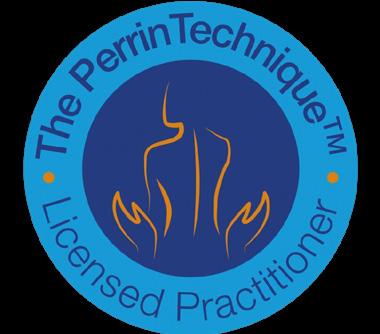
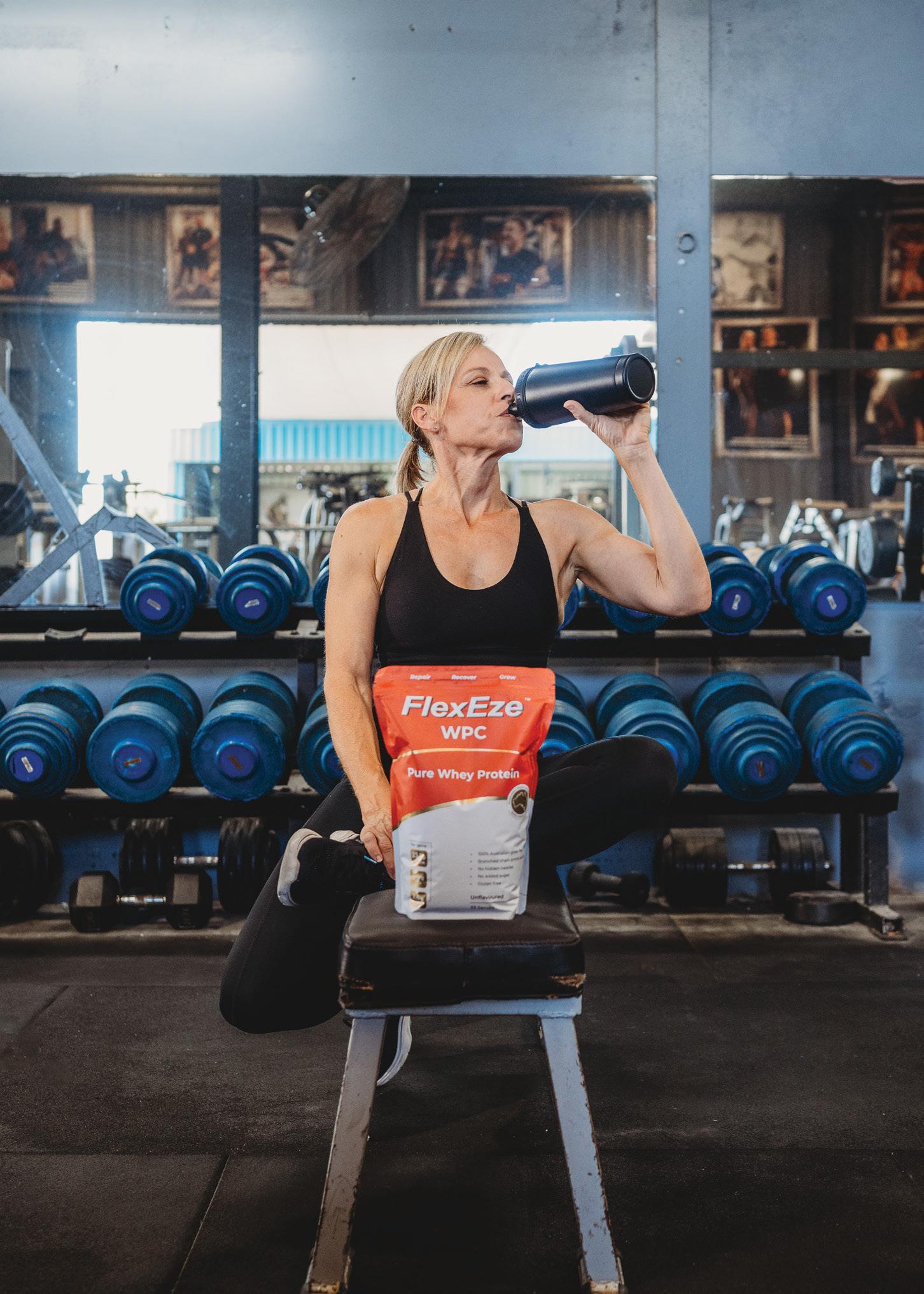
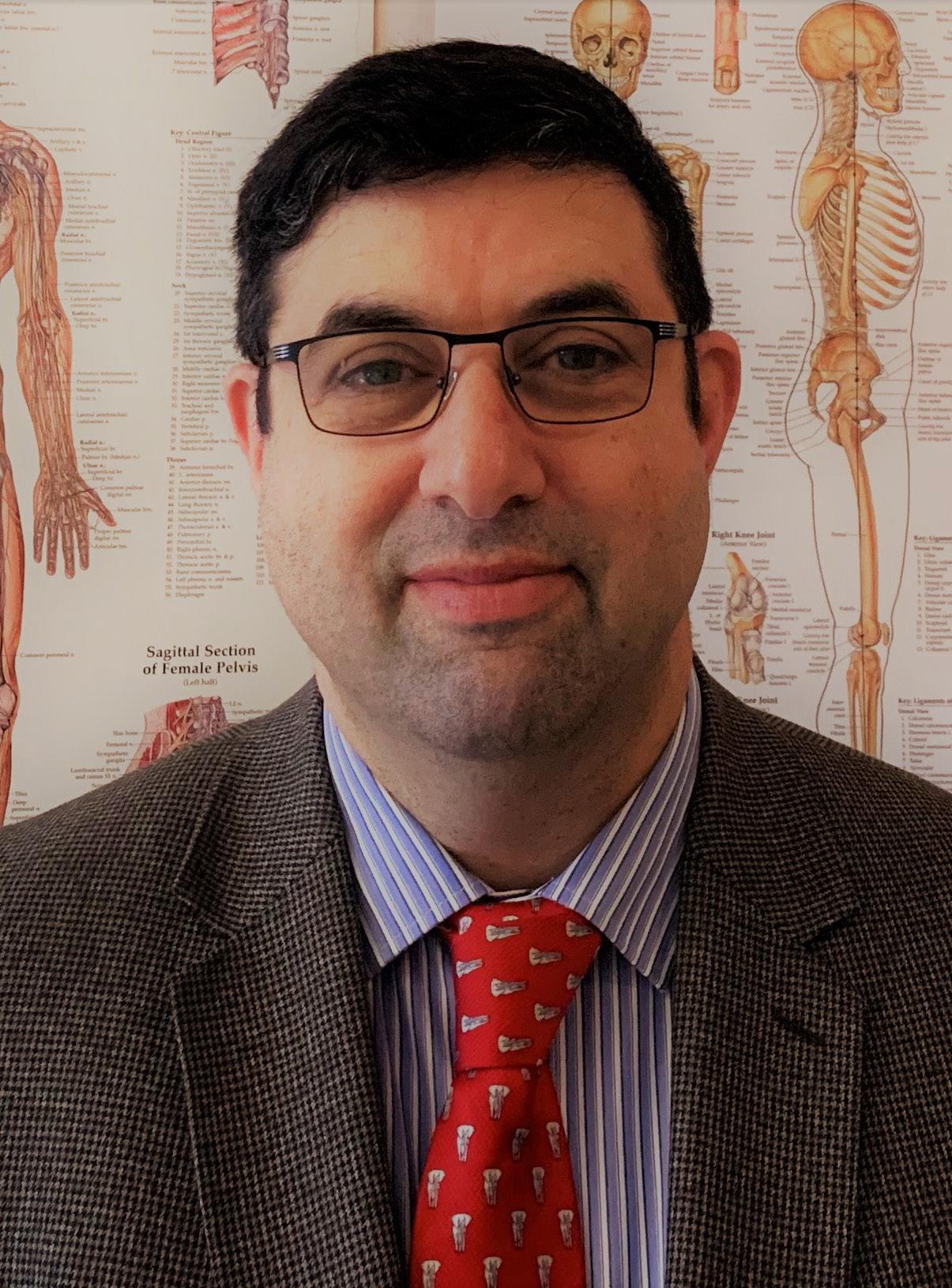


FlexEze Whey Protein Powder provides quality nutrition, essential for muscle and bone health
A clean, additive-free protein to compliment osteopathic care
Support patient musculoskeletal health, strength and recovery with FlexEze Protein
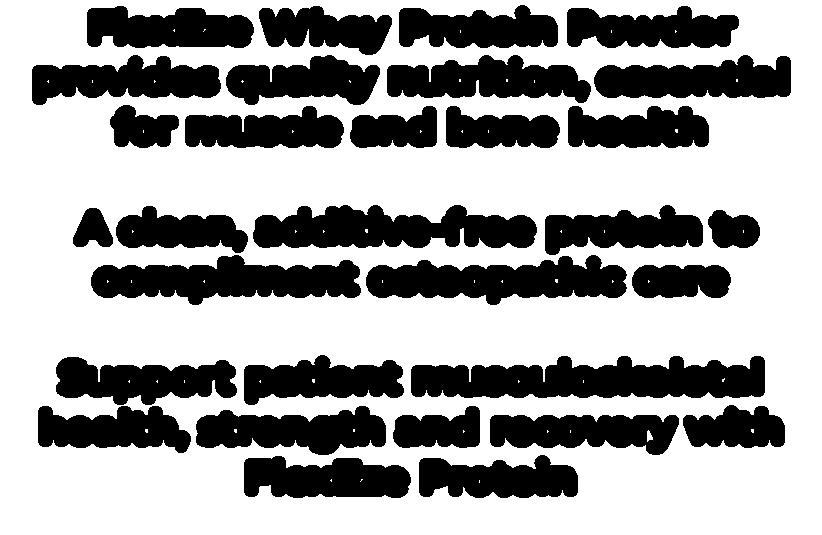



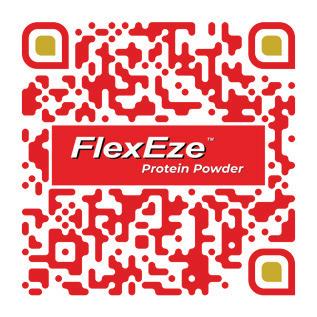

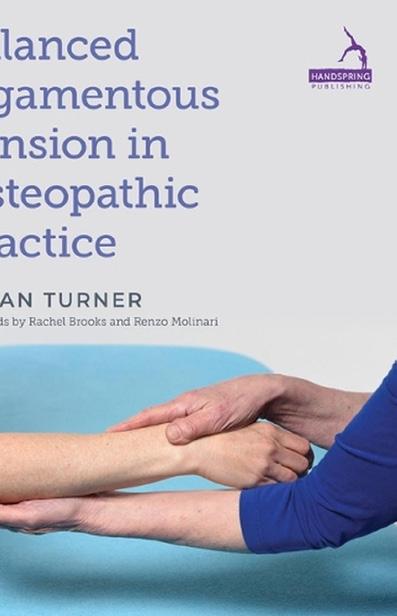
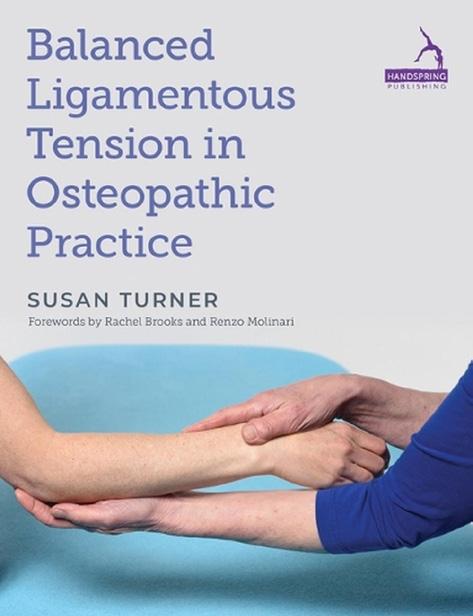

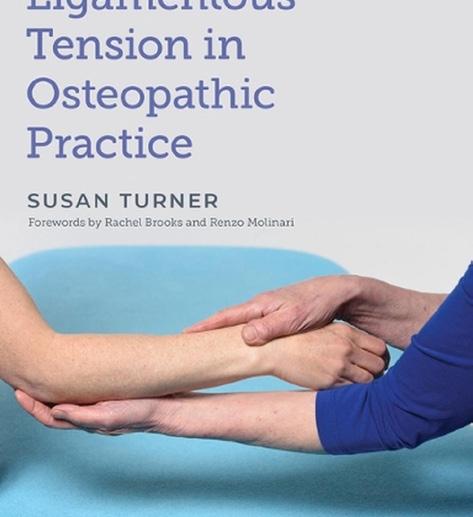

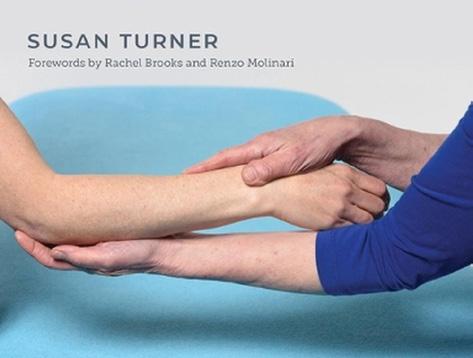



SBOOK REVIEW:
BALANCED LIGAMENTOUS TENSION IN OSTEOPATHIC PRACTICE
by Susan Turner, Illustrations by Heloise Niamh O’Donoghue,



Forewords by Renzo Molinari and Rachel Brooks, Contributions from Kok Weng Lim, Lynn Haller and Zenna Zwierzchowska.
BOOK REVIEW BY DR JULIE FENDALL DO MOST SC (PAEDS)

usan Turner is a very highly regarded and loved member of our profession, having taught at undergraduate and postgraduate levels for over 40 years. Her passion for osteopathy and her generosity in sharing her experience shines through in this valuable and very approachable text.
Balanced ligamentous tension is Dr Sutherland’s understanding of Dr Still’s indirect action technique, using the natural forces within the patient rather than in the operator. Dr Still taught “the principle of exaggeration of a lesion or strain to the degree of release, then of the ligaments drawing the bones back into normal relative position”. The principles and practice were handed from Dr Still to Dr Sutherland, then on to Dr Anne Wales. Susan Turner was a direct recipient of this by studying with Dr Wales over many years with her study group in the US, and with small study groups of colleagues from the UK. This continuum of knowledge not only honours the foundation of osteopathy but also ensures its relevance in contemporary practice, making this book invaluable to both experienced practitioners and to those new to BLT. Susan, along with contributions from her colleagues and fellow teachers Kok Weng Lim, Lynn Haller and Zenna Zwierzchowska, explains the anatomy and physiology underpinning BLT, also expressing the spiritual aspects of wellness to help our patients. The text clearly guides the reader through technical application along with philosophical insights, citing relevant contemporary research that supports the methods. Susan illustrates how the anatomical contacts can influence internal physiological states, fostering a deeper understanding of the reciprocal relationship between structural integrity and healthy function. This holistic perspective invites practitioners to engage with their
patients’ potential for enhanced wellbeing, making it an essential read for anyone in the field. This has already been illustrated by this book achieving bestseller status within weeks of first being published.
The detailed descriptions of techniques, accompanied by photographs and QR codes linking to video demonstrations, enrich the reader’s experience. Susan’s passion for osteopathy and her clarity of understanding emanates from every page. Her unique sense of palpation and ability to interact profoundly with the body’s connective tissues are aspects that readers will find particularly inspiring.
Overall, Balanced Ligamentous Tension in Osteopathic Practice is a treasure for the osteopathic community. It’s a text that will inspire, inform and be cherished by practitioners serving as a vital link in the ongoing legacy of osteopathic teaching. I highly recommended this book to anyone looking to deepen their understanding of balanced ligamentous tension and enhance their practice. It’s an essential in the osteopathic library.
Balanced Ligamentous Tension in Osteopathic Practice 1st Edition by Susan Turner (Author), Heloise Niamh O’Donoghue (Illustrator), Renzo Molinari (Foreword), Rachel Brooks (Foreword) 1. SBN-10 1913426394 2. ISBN-13978-1913426392
Publisher: Handspring Publishing
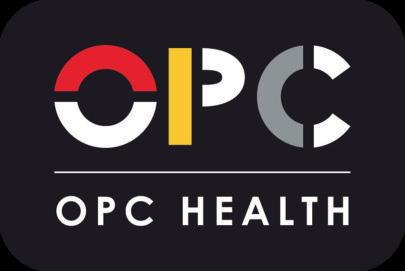
FREE freight on all online orders
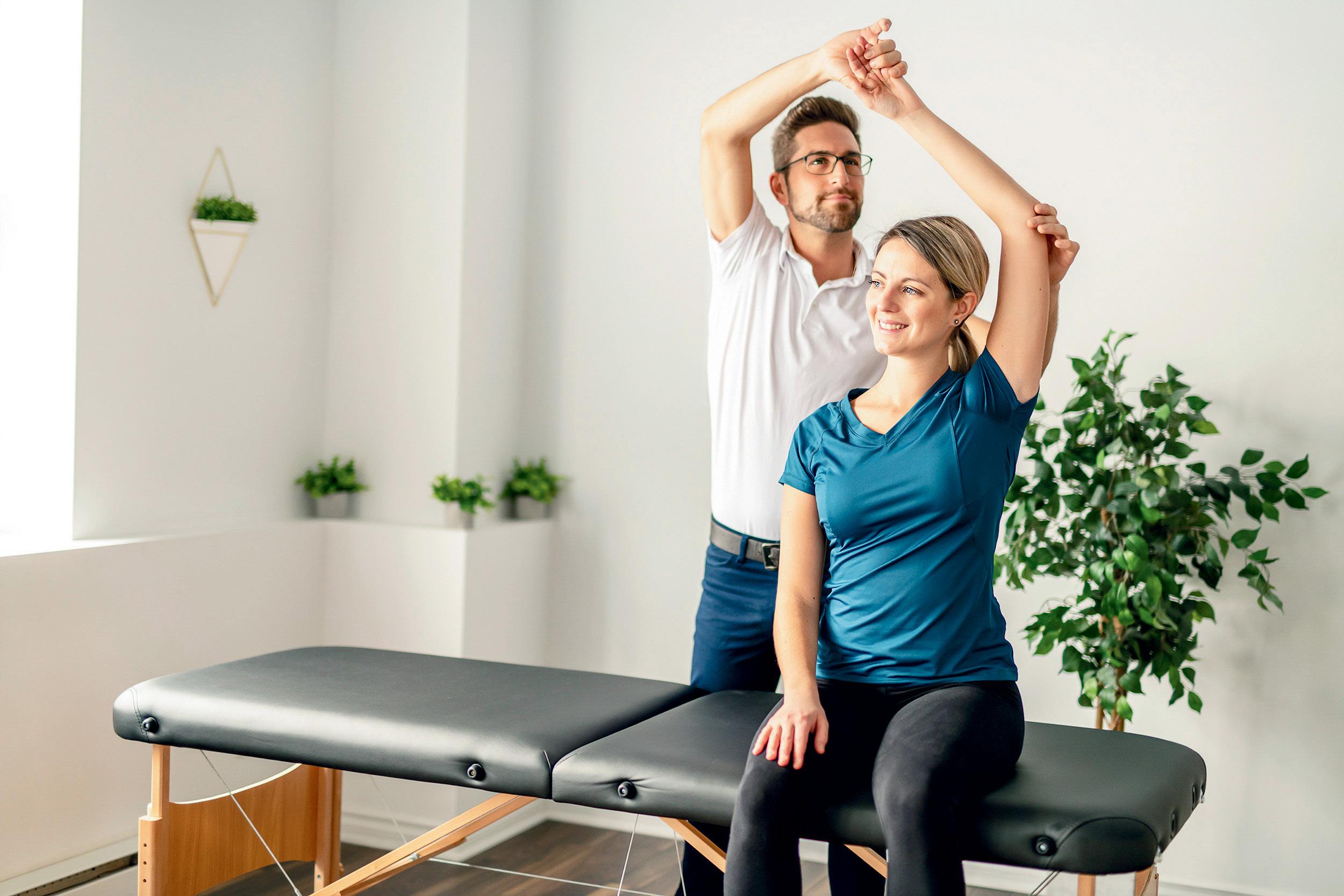
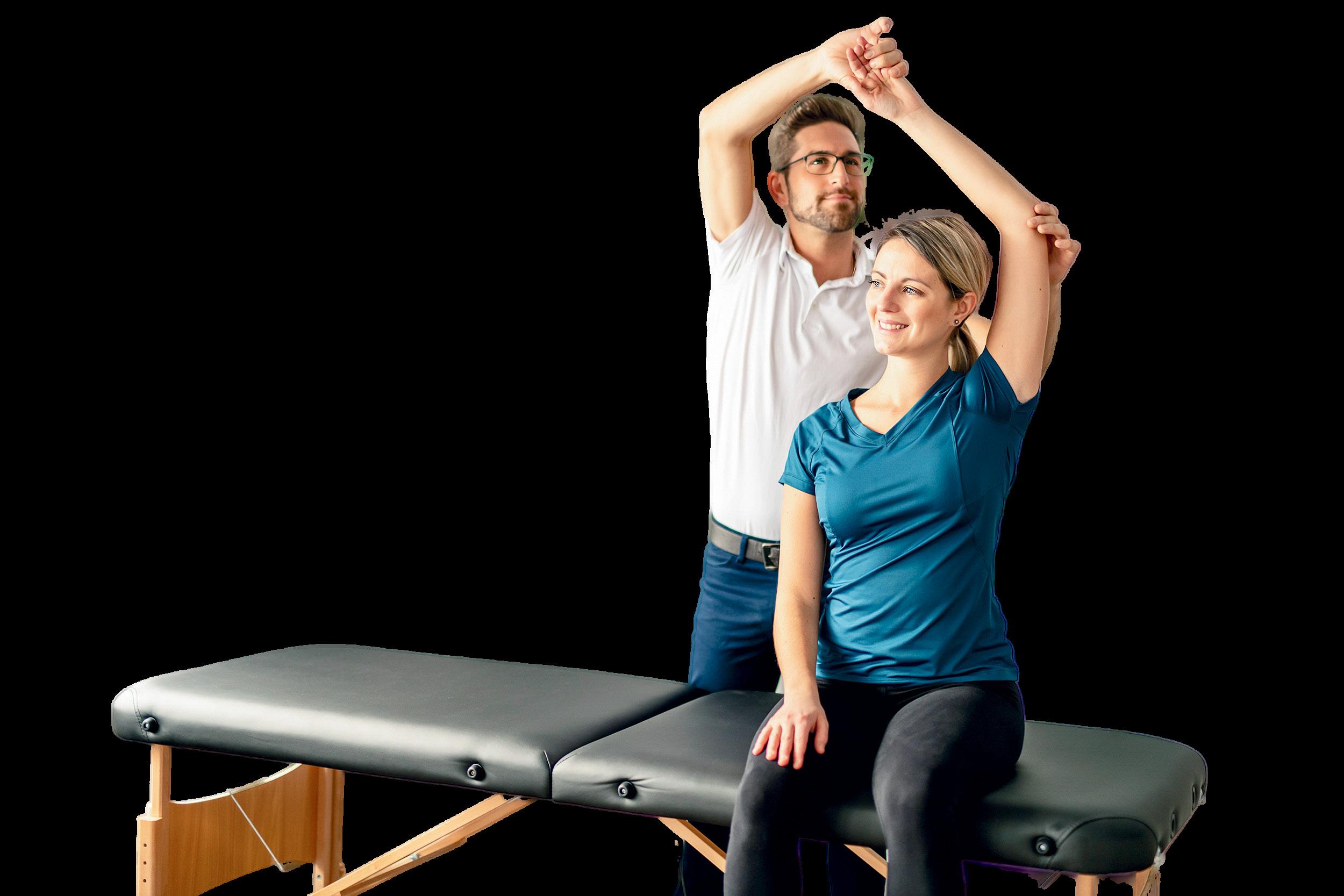
We offer a full range of products for your practice, from treatment tables and assessment tools to rehabilitation aids, pain management products, braces, orthotics, and massage essentials.
Whether you're setting up a new clinic or stocking up on essentials, we've got you covered!
